2 History of Aircraft & Aviation
Introduction
The roots of aviation and aeronautical engineering can be traced back many centuries. However, it was only in the last century that humankind turned the dream of flight into a practical reality. The invention of the airplane has profoundly transformed modern society, revolutionizing global transportation, commerce, and cultural exchange. Today, most people think nothing about getting on a jet airliner and flying at nearly the speed of sound for thousands of miles, perhaps even halfway around the planet in one flight. Nevertheless, reaching this point has required numerous innovative engineering solutions to overcome the challenges of building human-carrying vehicles suitable for fast and efficient atmospheric flight.
The continued development of new airplanes is driven by a demand for safer and more efficient designs for both military and civilian use. Aeronautical engineering advancements have enabled larger and faster aircraft to carry more passengers, cargo, or other payloads over longer distances. Military requirements also continue to challenge state-of-the-art aerospace technologies, such as improving the capabilities of occupied (piloted) and unoccupied aircraft (e.g., drones), targeting, surveillance, offensive weapons delivery, and defensive systems.
Looking back at the evolution of flight, which occurred over several centuries, it becomes clear that the most significant advances in aviation can be correlated to critical technological advancements, perhaps even to what might be called leaps or “quantum jumps” in those technologies. These advancements include improvements in understanding aerodynamics, stressed-skin aluminum airframe design, and lightweight yet powerful engines [1] propellers, and other propulsive technologies. Additionally, stronger and lighter materials made from composites have been developed, as well as the recent application of computers and software engineering. The preceding list is by no means an exclusive list of advancements, with improvements in navigation systems such as GPS and collision avoidance, digital avionics, fly-by-wire flight controls, pilot training, and more stringent certification standards being intrinsically tied to all of the continuing and potential future advances in aeronautics and aviation.
Learning Objectives
- Describe the key events in the history of aeronautics, starting with lighter-than-aircraft and gliders and ending with today’s electric and autonomous aircraft.
- Identify the main aerodynamic, structural, propulsion, and control problems faced by early designers and explain the solutions that addressed those problems.
- Explain how military demands, commercial markets, and government regulation have influenced aircraft design and industry growth.
- Summarize the parallel progress of aerodynamic theory, testing methods, and flight-control technology and relate this progress to safety and performance gains.
- Consider where the continued advances in aeronautics and aviation might take humankind in another half-century.
Early Ideas of Flight
Some of the earliest ideas of human flight can be found in Greek mythology. Icarus and his father, Daedalus, attempted to escape from the labyrinth of Crete by attaching wings to their arms, which were constructed from feathers, threads, and beeswax, mimicking the wings of birds. However, Icarus flew too close to the sun; the wax melted his wings, and he drowned in the sea. Nevertheless, according to the legend, Daedalus continued to fly and escaped successfully.
The concept of mechanical flying machines can also be traced back to the Renaissance visionary Leonardo da Vinci, whose numerous notebooks, referred to as Codices, date to the 15th century. To read his text (in Latin), it must be held up to a mirror and read backward, but even then, his unique writing style makes his words difficult to understand. Among da Vinci’s meticulously drawn sketches are flying machines and aeronautical contraptions, such as ornithopters with mechanically driven flapping wings to imitate the flight of birds, as shown in the image below. In his note-books, he also shows an aerial screw device resembling a helicopter. In addition, Leonardo da Vinci considered engine concepts, realizing that humans could never produce enough power to achieve flight. However, he does not seem to have integrated his ideas of engines with his flying machine concepts.

Toys in the form of kites, gas-filled balloons, and rotating-wing tops (known today as a bamboo dragonfly or bamboo copter) were used in ancient China around 2000 BC, with later attempts at building giant human-carrying kites. However, a hot-air balloon was the first recorded human-carrying vehicle capable of sustained flight. This lighter-than-air vehicle was designed in France by the Montgolfier brothers in 1783. Their first unoccupied balloon, made of paper and silk, rose to an altitude of approximately 2,000 m (6,600 ft). A few weeks later, a larger balloon named the Aerostat Reveillon was launched, carrying pilot Jean-François Pilâtre De Rozier, who ascended to the end of its 90 m (250 ft) rope tether. A month later, De Rozier and the Marquis d’Arlandes made aviation history by conducting the first free flight in a balloon, which ascended to around 150 m (500 ft) and traveled approximately 8 km (5.5 miles) before safely landing.

Benjamin Franklin witnessed some of these early balloon flights. He was so impressed that he predicted that balloons would soon have considerable military value for “conveying intelligence into, or out of, a besieged town, giving signals to distant places, or the like.” Indeed, tethered balloons were used during the American Civil War for battlefield surveillance. They could reach altitudes of up to 300 m (984 ft), giving a great vantage point for soldiers, who used signal flags to send information down to their commanders. Franklin later proposed lighter-than-air concepts combined with propulsion, eventually leading to the development of concepts with rigid internal frames, which became known as dirigibles. The word dirigible is usually associated with rigid-frame airships, the term originating from the French verb diriger (“to steer”).
The first dirigible was built and flown in 1852 by Henri Giffard and was driven by a propeller powered by a steam engine. Today, an airship is defined as any powered, steerable aircraft inflated with a lighter-than-air gas. Early airships and dirigibles were filled with hydrogen gas, which is highly reactive with many things, and airships had exploded even before the infamous Hindenburg disaster in 1937. A modern blimp, which is essentially a “pressure airship,” is a powered, steerable, lighter-than-air aircraft whose shape is maintained by the pressure of helium gas inside the envelope. Unlike a dirigible, a blimp loses its shape when the internal gas pressure is lost. Newer versions of blimps now have a minimal internal structure made of carbon fiber, classifying them as semi-rigid airships.
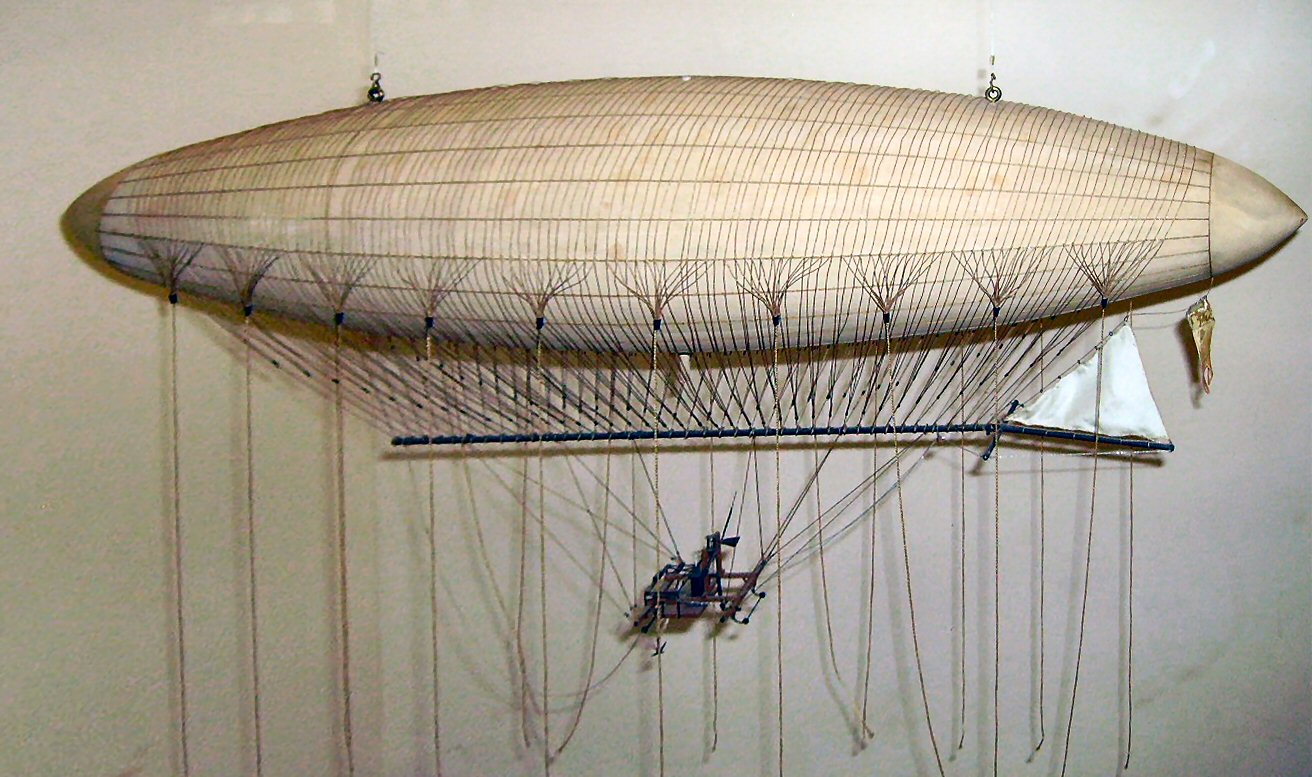
Invention of the Airplane
Any claims about the sudden “invention” of the airplane at the beginning of the twentieth century are incorrect because the origins of airplanes can be traced back many centuries. History suggests that the creation of a practical airplane was an evolutionary consequence of the contributions of many individuals over a relatively long period.
Before the nineteenth century, there were few scientific investigations of flight or into the science of aerodynamics. Indeed, the earliest work on developing flying machines and airplanes can be placed into two distinct categories: inventive and scientific. The former is where intuition is used instead of formal technical training, whereas the latter is where a trained, more systematic approach is used. Nearly all early developments in aviation were inventive, i.e., building something and trying to fly it; the usual outcome was failure, but with occasional success. One does not need to understand a complex engineering system, such as an airplane, to make it work at its most basic level. However, understanding the underlying science is necessary to make it successful and practical.
Humankind has always been inspired by nature, especially in the form of birds. Even well into the twentieth century, there were attempts to build flying machines that mimicked the flapping of wings. This thinking manifested in all sorts of weird contraptions, many of which were in the form of ornithopters, as shown in the photograph below; all of these were unsuccessful. Nevertheless, many human-powered ornithopters, tower jumpers, and brave “bird-men” captured the public’s attention much more than scientific endeavors. Today, with hindsight, most would agree that such efforts with ornithopters and flapping-wing contraptions only hindered the acceptance of more scientific and engineering thinking on the elements needed to build a successful flying machine.
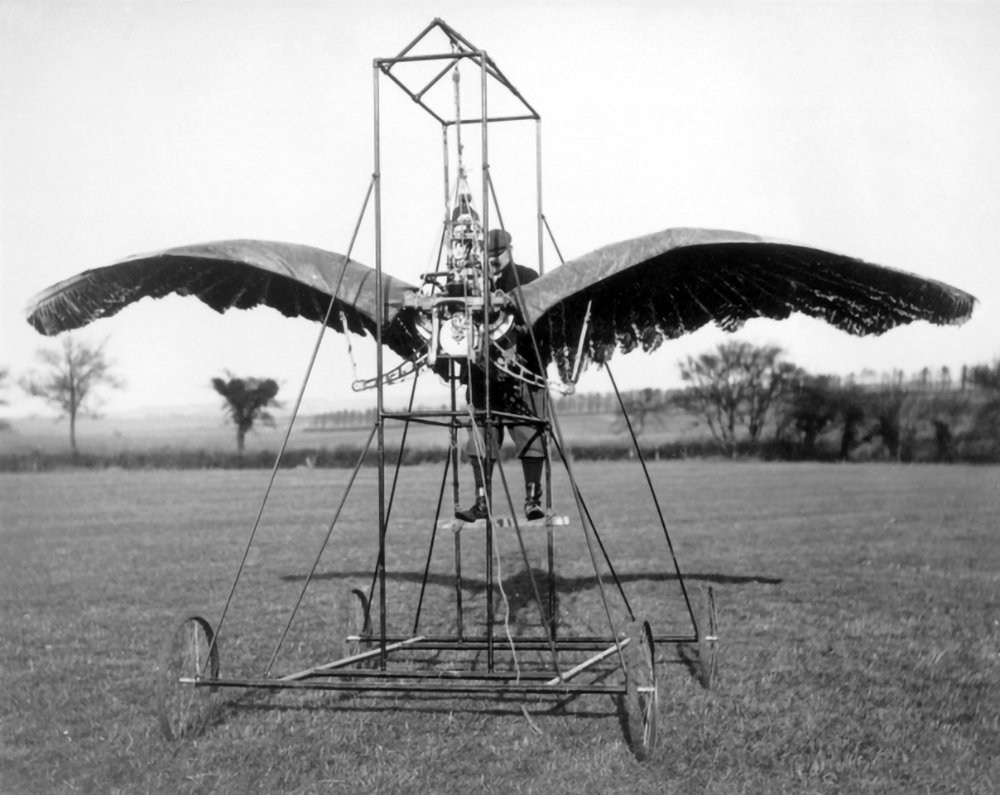
The inherent mechanical, aerodynamic, and other complexities in building a human-carrying aircraft with adequate power and control capabilities that did not structurally fail and fold up during flight resisted many efforts until the beginning of the twentieth century. Nevertheless, several fundamental issues needed to be overcome:
1. Understanding basic aerodynamics. The size of the wings and the power required to sustain flight were unknown to the earliest experimenters, who were guided more by intuition than science. While the science of aerodynamics, such as the force produced on a wing in a stream of air, had been explored by Isaac Newton and others, the first significant application of aerodynamic theory to airplane design occurred in the 1920s. The earliest airplanes did not have large enough wings to fly, or the wings were just too big and heavy, or they were so fragile that they suffered structural failure.
2. The need for a suitable engine. This issue was a problem to be overcome at the beginning of the twentieth century by developing internal combustion (gasoline-powered) engines. Steam engines were never viable for use in any airplane. However, attempts were still made to utilize them, often employing a limited amount of superheated steam rather than carrying a boiler on board.
3. Designing a propeller. The ability to build a propeller suitable for aeronautical use was challenging. Early propeller shapes often emulated those used on oars or ship propellers, which was not a good idea, even though the fundamental principles on which they work are the same. The best blade shapes for propellers that work efficiently in the air were determined through a long evolutionary process over many decades.
4. Obtaining structural strength and stiffness while minimizing weight. Minimizing the empty structural weight so that the machine could take off and fly with a pilot and a small payload was difficult, even with relatively lightweight materials like wood and fabric. Early internal combustion engines were made of cast iron and were very heavy relative to their power output. Aluminum was not commercially available until about 1890 and was not used as a construction material in aeronautical applications until around 1915.
5. Providing stability and adequate control. Early aircraft were unstable or marginally stable, and many crashes occurred even though the machines may have been structurally sound. It took many decades to understand the critical connection between the center of aerodynamic lift on the machine and its center of gravity, as they both affected flight stability. Developing effective control surfaces, especially for roll, also took many years.
At the beginning of the 19th century, George Cayley, an English nobleman and prolific scientist, proposed various aircraft concepts, including gliders, numerous types of aeroplanes (airplanes),[2] and even a primitive helicopter. His glider and airplane concepts utilized a primary wing for lift generation with smaller horizontal and vertical tail surfaces for directional stability and control. Cayley constructed numerous free-flying gliders of varying scales, which he utilized to gain a fundamental understanding of aerodynamics and flight stability, including the use of wing cant or dihedral on the wings. He also coined the concept of the balance of four forces that influence aircraft flight, namely lift, weight, thrust, and drag, which later earned Cayley the title of the “Father of Aeronautics.”

Cayley experimented with wing models placed on the end of a whirling arm device and correctly concluded that the aerodynamic forces produced on his models were proportional to the squared value of the speed at which the model moved through the air. Cayley also recognized the need for a lightweight engine to power his aircraft. However, in the mid-19th century, only steam engines were available, and they were unsuitable for aeronautical use. Besides the heavy steam engine itself, it would also have to carry a boiler with ample water and fuel to produce steam; this is impractical for an airplane because such an overall system would be enormously heavy.
In Germany, Otto Lilienthal developed several glider concepts, reportedly having conducted over a thousand flights from the top of a hill by the beginning of the 20th century. Octave Chanute, a Frenchman living in the U.S., furthered Lilienthal’s work. Chanute helped others, including the Wright brothers, with advice on the design of flying machines. He also wrote a book about his experiences, which remains available today. Chanute’s open approach to discussing developments in the evolving aviation field ultimately led to considerable disharmony with the Wright brothers. The Wrights were secretive about their work and quickly patented their ideas to protect them, eventually becoming embroiled in a significant “patent war” with others. However, the Wright brothers were the first to achieve successful powered flight, where others had previously failed.
First in Flight
In December 1903, the available historical record and Smithsonian Institution documents indicate that the Wright brothers, Orville and Wilbur Wright, were the first to fly a powered biplane aircraft that took off and landed under the control of its pilot. A photograph of the famous flight is shown below. Before 1903, the Wright brothers experimented with various biplane gliders, laying the groundwork for their powered aircraft. There remain claims that Gustave Whitehead flew a powered aircraft several times between 1901 and 1902, pre-dating the first flights by the Wright brothers by over a year, but this is highly unlikely.

Shortly before this, Samuel Langley had tried to fly an aircraft with tandem (fore and aft) monoplanes, but the wings folded up in flight, and his machine crashed into the Potomac River. Aircraft structures must be both strong and lightweight, but the quest for lightness means that they can become less stiff. Langley’s machine crashed because his monoplane’s wood and fabric wings were not stiff enough and broke off. The Wright brothers experimented with different types of structures and developed a more rigid design in the form of a biplane.
Notably, the Wright brothers designed and built not only their airframe but also the engine and propellers to power their aircraft; in other words, they understood how to integrate the essential components of an airplane and then make it function as a system. They even built a wind tunnel, which they used to make systematic measurements of the aerodynamic forces on wings of different shapes, including the critical effect of aspect ratio, i.e., the beneficial effects of the wing’s slenderness on aerodynamic lift and drag. In this regard, they built their famous Flyer with a wing aspect ratio that significantly exceeded anything else flown previously. Louis Breguet of France later made meticulous tests of wings and airfoil shapes in a wind tunnel of his own design, paralleling those of the Wright brothers and reaching similar conclusions.
The Wright brothers continued to develop their aircraft designs for several years, and by 1908, their aircraft could fly for over two hours and cover nearly 100 miles. Wilbur died in 1912, but Orville lived until 1948. Orville witnessed many milestones in aviation, including the invention of the jet engine, but also saw the destruction caused by airplanes being used as weapons of war during WWI and WWII. He said, “We dared to hope we had invented something that would bring lasting peace to the Earth. But we were wrong. We underestimated man’s capacity to hate and to corrupt good means for an evil end.”[3]
Notably, in the history of aeronautics and aviation, the Wright brothers’ systematic engineering approach led to their continued success, rather than the more inventive approach pursued by others attempting to learn to fly and achieve powered flight. In Europe, Santos-Dumont developed several powered aircraft patterned on the Wright brothers’ successful concept, and in 1906, he made the first public flight demonstrations of his airplane in Paris.
Period 1910–1930
Several significant advances in aircraft development and aeronautical engineering occurred during and after WWI, and rapid developments in engine and propeller designs continued. The Wright brothers demonstrated that a propeller required large aspect ratio blades with nose-down twist along their length to achieve good propulsive efficiency, a key factor in their success. The “raked” propeller had more blade area toward the tip, as shown in the figure below, which improved further efficiency, allowing more engine power to be converted into useful thrust.

Although monoplane wing designs were slowly emerging, the biplane design continued to undergo various improvements, including methods for strengthening the wings and airframe, as well as reducing the drag caused by the structural bracing and wires. Early airframes, however, were still made primarily of wood and covered with doped cotton fabric. Wood is a readily available, durable, and easily worked construction material. However, such a construction method is limited because it becomes increasingly structurally inefficient and heavy for larger aircraft types.

These early airplanes also utilized air-cooled rotary engines, in which the crankshaft remained stationary, with the entire crankcase and its cylinders rotating around the crankshaft as the propeller spun. However, the rotary engine’s large rotating mass, combined with the inertia of the propeller, meant that it behaved like a giant gyroscope, causing various stability and control problems for the aircraft, such as the inability to turn in both directions. These latter problems were mainly resolved using radial engines and other types of piston engines, such as inline and “V” forms.
Increasing aerodynamic lift and reducing drag became prime objectives for aeronautical engineers to improve aircraft performance and maneuverability. By 1915, there was already significant interest in the monoplane wing, which offered airplane designers the potential for substantial reductions in aerodynamic drag and airframe weight compared to the structurally braced biplanes and triplanes of that era. For example, the Junkers J-1 was not only an early monoplane but also pioneered metal airframe construction, but it was purely a research airplane rather than being designed for production. The Junkers F-13, as depicted in the photograph below, entered operational service in 1919 and represented the state-of-the-art in aeronautical engineering at the time. While the J-1 was made of steel structural components and covered with a thin-gauge steel sheet, the F-13 was made almost entirely of lightweight aluminum or duralumin[4] structure with a corrugated duralumin skin for stiffness.
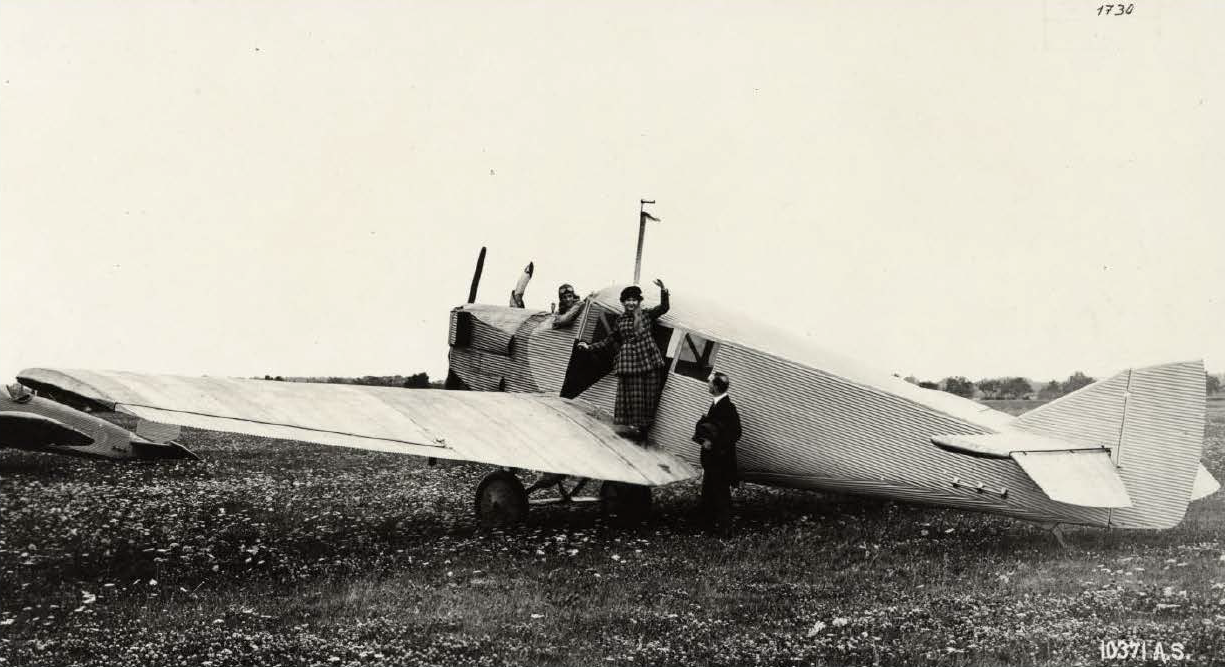
The earliest monoplanes were unsophisticated, with unrefined wing sections and rectangular wing planforms. In the quest for improvements, engineering interest peaked in the pursuit of a better understanding of the aerodynamic effects of airfoil and wing planform shapes. This led to systematic wind tunnel investigations to measure lift and drag, some of which had been initiated by the Wright brothers using a small wind tunnel and force balance of their own design.
However, the continuing lack of rigidity of the early monoplanes led to the aeroelastic problem of wing flutter in high-speed dives and severe wing bending in even the most benign maneuvers. Flutter can result in catastrophic structural failure, and many accidents caused by wing and control surface flutter occurred during the 1920s and 1930s. These problems, however, were soon to be overcome with advances in understanding how to design stronger and stiffer aircraft structures, mainly by using aluminum instead of wood and fabric.
At the end of WWI, aeronautical technology increasingly focused on civil air transportation goals, with the first passenger-carrying aircraft being flying boats. In 1920, the American Curtiss NC-4 flying boat, powered by four 400-hp engines, became the first aircraft to cross the Atlantic, completing the journey in 16 days with numerous stops. Two weeks later, Royal Air Force pilots John Alcock and Arthur Brown made the first nonstop transatlantic flight in a Vickers Vimy, which took 15 hours and 57 minutes. Charles Lindbergh made the first solo nonstop transatlantic flight from New York to Paris on May 20–21, 1927, in the single-engine Spirit of St. Louis, covering approximately 3,600 miles in 33.5 hours. Lindbergh faced challenging weather and navigated using dead reckoning, with the aircraft stripped of non-essential equipment to maximize fuel capacity. This historic flight demonstrated the potential for long-distance air travel and significantly boosted public interest in aviation.

From the 1920s to the 1940s, civil aviation relied on flying boats. Flying boats offered several advantages, including the ability to operate from large bodies of water, which were more widely available than suitable airfields. This made them ideal for serving remote areas and establishing new air routes across oceans and continents. During the 1930s, Pan Am popularized large flying boats for commercial aviation. The airline operated iconic airplanes, such as the Martin M-130 and the Boeing 314 Clipper, which became synonymous with luxury and international travel. The Clipper, as shown in the photograph below, had a range of about 3,500 miles and could comfortably carry up to 74 passengers, complete with sleeping berths and dining services. It was pivotal in establishing transoceanic routes, particularly across the Atlantic and Pacific Oceans.
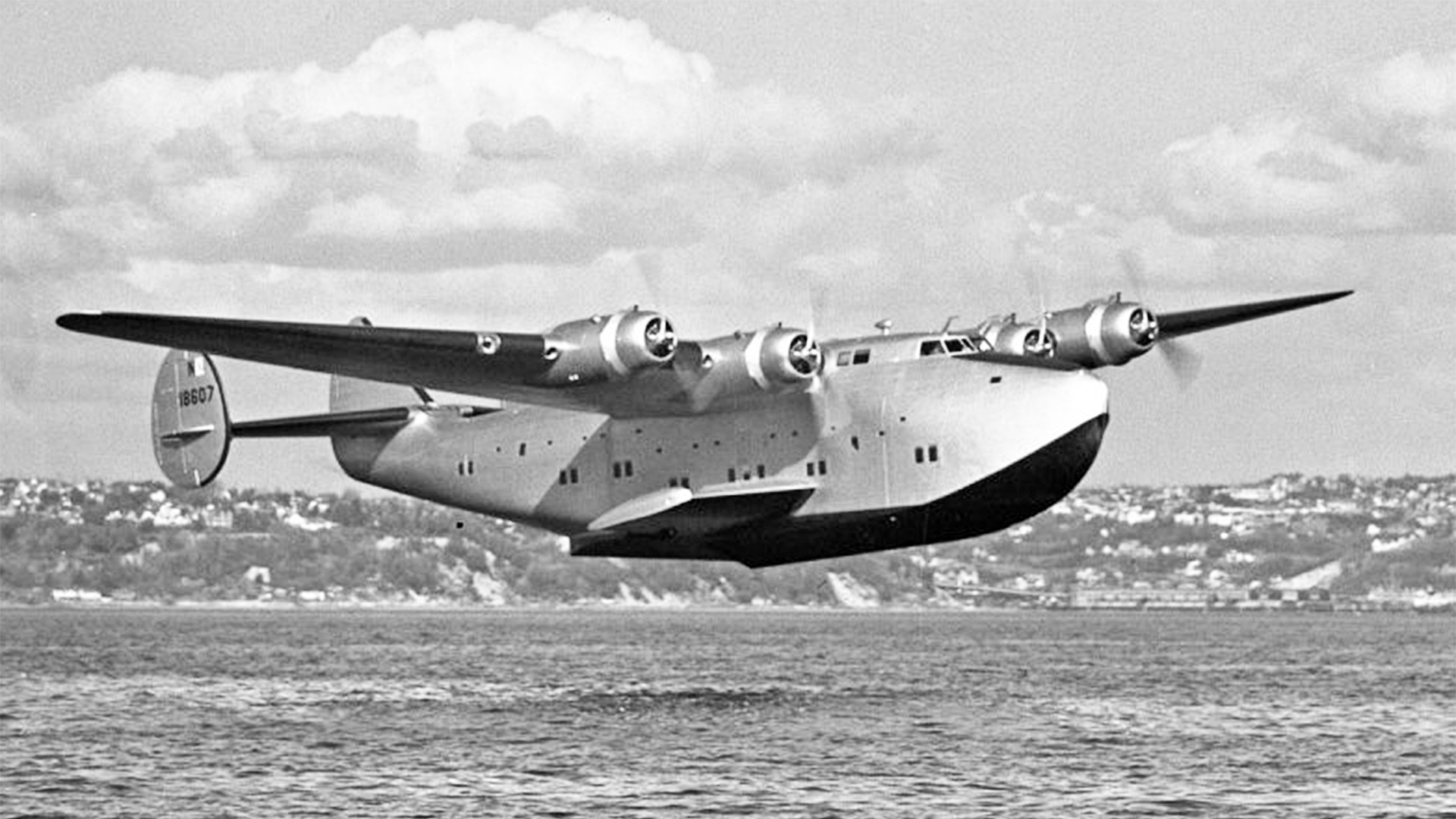
Flying boats were extensively used during WWII for patrol, reconnaissance, and rescue missions. Aircraft like the Consolidated PBY Catalina were vital in anti-submarine warfare and air-sea rescue operations. Their ability to land on water made them invaluable for long-range missions over the vast expanses of the Atlantic and Pacific. British flying boats, such as the Short Empire and the Sunderland, were initially designed for military purposes but were later modified to serve as passenger and mail carriers on long-distance routes, including transatlantic and imperial air routes to Africa, Australia, and India. The reliance on flying boats began to decline with the development of more advanced land-based aircraft and the construction of longer runways at major airports, which made it possible to operate larger and more efficient planes for civil aviation.
Period 1930–1950
Many advances in aeronautical engineering were made up to and throughout WWII, including rapid developments in engine technology. Concepts such as supercharging allowed for the development of higher-powered piston engines. This advance dramatically improved overall aircraft performance, including higher achievable flight speeds and higher altitudes. By this time, most aircraft were of the more aerodynamic and structurally efficient monoplane type, the biplane all but relegated to aeronautical history.
Further advances in metallurgy led to more powerful piston engines with improved power-to-weight ratios and better reliability. However, even then, early engines would run for only a few hundred flight hours, with valve and piston failures being common. Propeller technology also saw significant advancements in the 1920s, primarily in terms of propulsive efficiency. The use of lightweight construction materials, such as aluminum, also began to be introduced into aircraft designs, allowing aeronautical engineers to develop stronger and stiffer airframe structures, lighter engines, and more efficient propellers. Today, high-strength and lightweight aluminum alloys are crucial to the aerospace industry’s success. However, aluminum was not commercially available in the alloyed form needed for aircraft construction until the late 1920s.
As power requirements increased, the rotary engine soon reached its design limits, not least because of the adverse gyroscopic effects it produced. Rapid advances in metallurgy and design, along with improved cylinder cooling, finally enabled the development of higher-powered radial engines. Fuels, too, saw better formulations to increase power output. Early types of gasoline were explosive and caused many engine failures because of pre-ignition. The use of lead tetraethyl (Tetraethyl lead) in the fuel (thereby raising the so-called octane number) allowed for a more controlled burn of the fuel (this is called “deflagration”), allowing higher compression ratios to be used, so more power could be obtained, and the engines were also more reliable.
The Wright 225 hp (168 kW) J-5 (R790) Whirlwind radial engine, as shown in the photograph below, was first produced in 1925 and is notable because it is considered one of the first reliable aircraft engines. Engines of that era would typically fail or require an overhaul within 50 hours of operation. Nevertheless, the reliability of early aircraft piston engines remained relatively poor, and catastrophic in-flight failures were not uncommon.
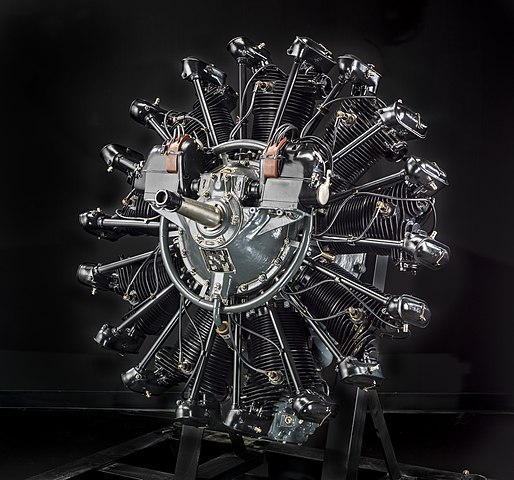
Propeller technology also saw significant advancements during this period, including the development of variable-pitch and constant-speed propellers. These propellers allowed their aerodynamic propulsive efficiency to be maintained over a wide range of airspeeds. Combining high-powered, supercharged reciprocating engines with constant-speed propellers and increasingly aerodynamically and structurally efficient airframe designs resulted in numerous successful military aircraft, including fighters and bombers.
By the 1930s, the development of lightweight airframe structures, in the form of stressed-skin monocoque and semi-monocoque designs, had contributed significantly to improvements in aircraft range and payload-carrying capability. A monocoque design[5] Monocoque refers to a shell-like stressed skin that is mainly unsupported by any internal structure. A semi-monocoque design features internal structures, including spars, ribs, and stringers, to prevent the thin skin from buckling, and this type is typical of most modern airplane construction. Both designs are renowned for their efficiency and lightweight properties, as the outer structure serves as both a load-bearing frame and the enclosing surface.
The all-metal Junkers Ju 52, a twin-engine German design, and the twin-engine American Boeing 247-D were to define a new era of civil air transportation, marked by improvements in flight safety and passenger comfort. The distinctive corrugated skin of the Ju 52 provided the structure with considerable strength and resistance to buckling, given its relatively low overall airframe weight. Other airplane designs soon followed as civil aviation expanded and airlines demanded larger aircraft from manufacturers that could carry more passengers.
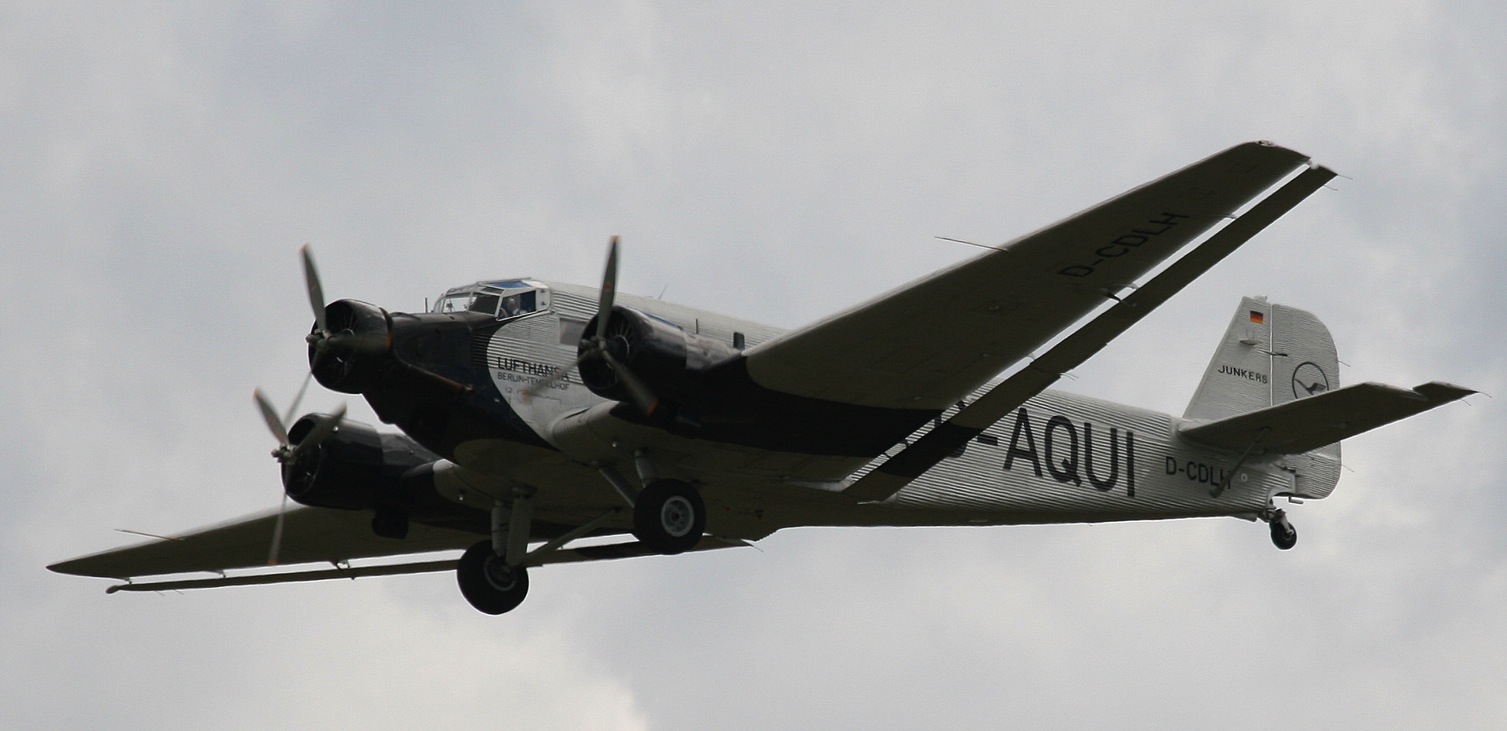
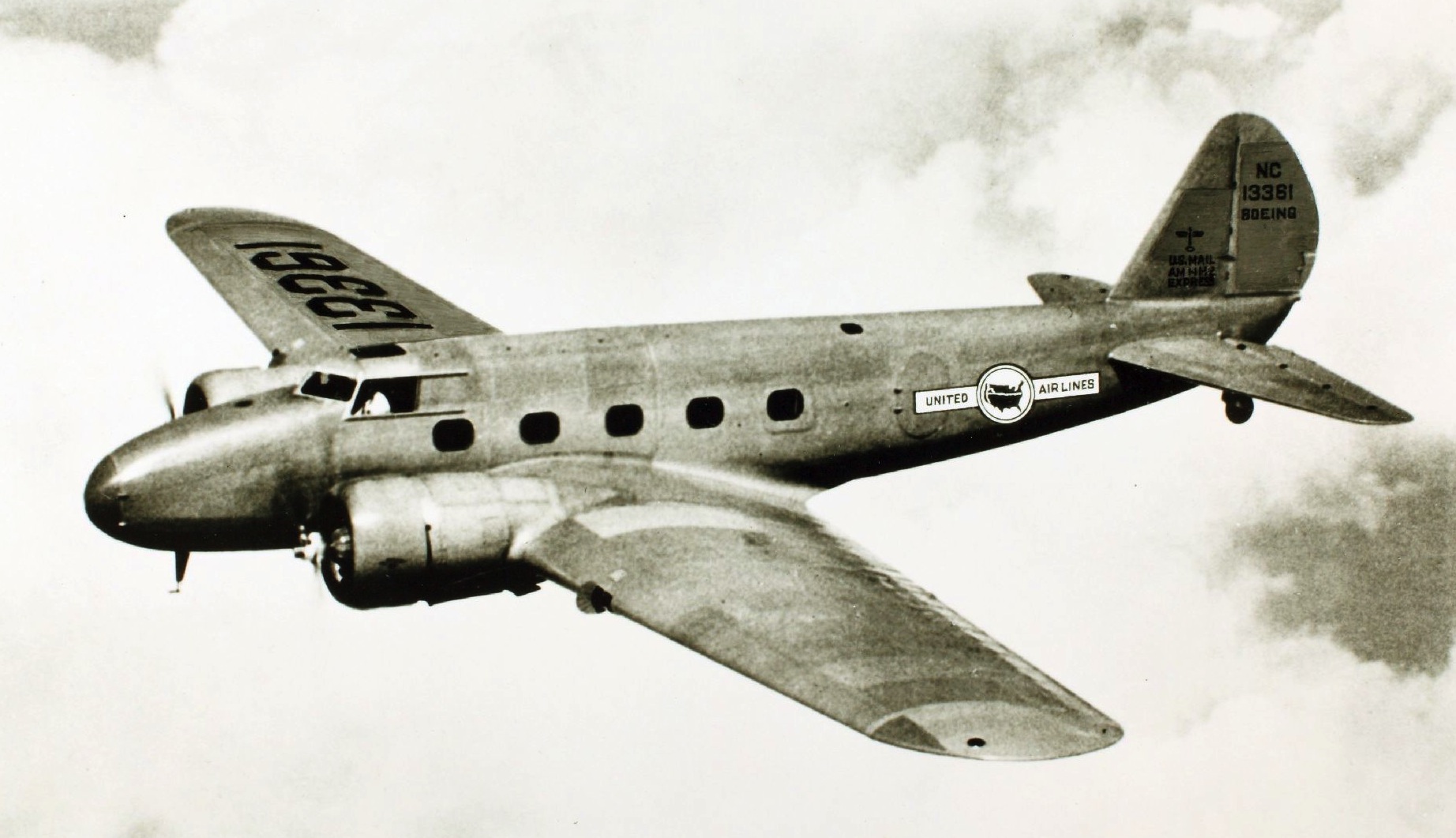
One of the most famous aircraft of the 1930s and 1940s was the Douglas DC-3, a twin-engined monoplane with an all-metal, semi-monocoque stressed-skin construction. It was reliable, easy to maintain, and it provided a quantum leap in civil air transport capabilities. The DC-3 had a good flight range, even with a full load of up to 32 passengers, and could also operate from short runways and grass fields. The military version, the C-47 Dakota, saw extensive use during WWII as a transport.

The British Supermarine Spitfire was one of WWII’s most technologically advanced fighters, combining advances in lightweight all-aluminum stress-skin airframe design with a powerful supercharged engine. The distinctive quasi-elliptical wing planform of the Spitfire had relatively low thickness, which provided good aerodynamic efficiency and low drag. However, the early Spitfires suffered from low roll rates and aeroelastic problems such as roll reversal, which was associated with the low structural stiffness at the wing tip. Although the Spitfire’s wing shape meant it took longer to build and was more expensive, it proved vital to the Allies’ ultimate success during WWII.

After WWII, aeronautical engineering made many further strides, leading to the development of increasingly larger and faster aircraft that benefited both military and civil aviation. Civilianized transport aircraft were initially developed from flying boats and WWII bombers. Still, it was only a short time before multi-engine aircraft were designed to carry passengers over considerable distances.
Larger transport aircraft were quickly developed by U.S. manufacturers, e.g., the Douglas DC-4 through the DC-7 series. These were followed by even more capable transport aircraft, such as the Lockheed Constellation and its successor, the Super Constellation, with its distinctive triple tail, which became one of the most successful airliners of the 1950s. It was powered by four 18-cylinder, 3,250 hp piston engines and could carry up to 95 passengers in pressurized comfort above most weather conditions at a cruising speed of approximately 300 knots (345 mph, 550 km/h). The Constellation was also used extensively by the military.
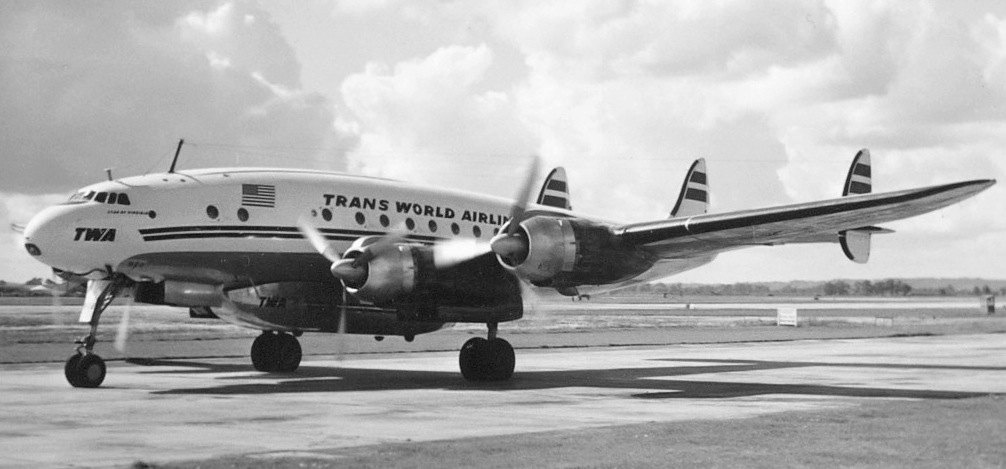
Competitions Drive Aeronautical Developments
Competitions and monetary awards have significantly influenced the history of aviation, driving innovation, advancements, and public interest. In the early 20th century, competitions such as those inspired by Samuel Langley’s Aerodrome, which received substantial U.S. Government funding, highlighted the importance of inspiring competition and providing monetary support. Although Langley’s attempts at flight in 1903 were unsuccessful, the structure of his machine failing catastrophically further encouraged the Wright brothers to achieve successful powered flight with their Flyer, which would occur later that year.
Before WWI, the British newspaper The Daily Mail sponsored several competitions to encourage aviation feats, such as crossing the English Channel. In 1909, Louis Blériot won GB£1,000 (about US$160,000 in today’s money) for being the first to achieve this feat. In 1911, the Daily Mail offered GB£10,000 (about US$1.6M in today’s money) for the first transatlantic flight, eventually leading to Alcock and Brown’s successful flight across the Atlantic Ocean in 1919. These competitions generated significant public interest, as well as numerous technological advancements in the aviation industry.
During the interwar period, the Schneider Trophy races for seaplanes and flying boats, held from 1913 to 1931, spurred advancements in aircraft design and speed, resulting in significant improvements in aerodynamics and engineering. The Schneider Trophy played a pivotal role in the development of the Supermarine Spitfire, one of WWII’s most iconic fighter aircraft. The competition pushed designers and engineers to explore new aerodynamic concepts, lightweight construction materials, more powerful engines, and efficient propellers. The Supermarine company’s race planes, particularly the Supermarine S.6 and S.6B, designed by R. J. Mitchell, were equipped with advanced Rolls-Royce engines. The close collaboration between Supermarine and Rolls-Royce during the Schneider Trophy period laid the groundwork for the development of the highly successful Merlin engine, which was subsequently used on many British and American aircraft.
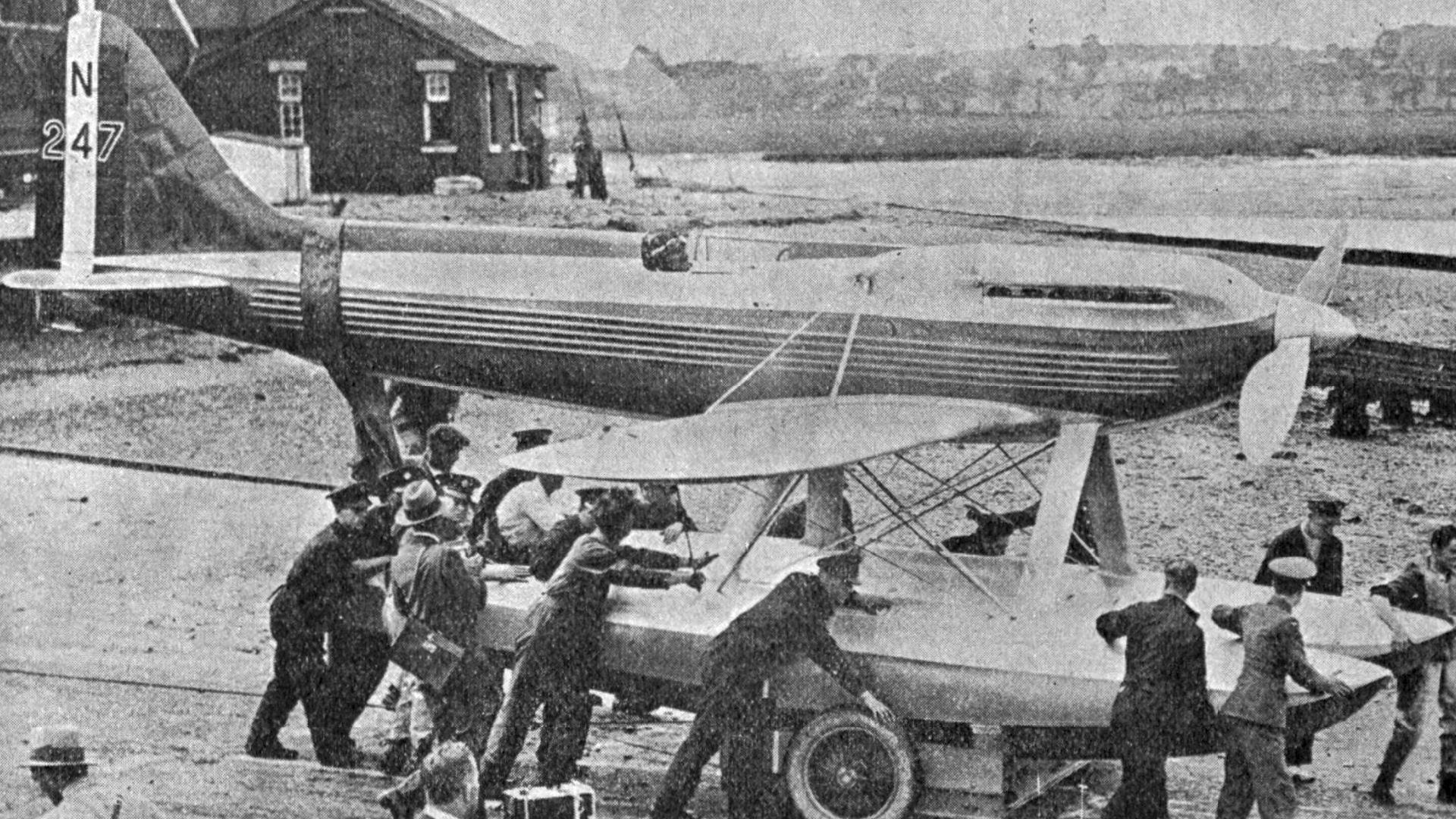
The Pulitzer Trophy races, which focused on high-speed flight, fostered innovation in both military and civilian aviation. They were held over a closed-circuit course, typically around 200 miles, with competitors aiming to achieve the fastest average speed over the course. The races quickly became prestigious within the aviation community, attracting top pilots and cutting-edge aircraft designs. Each year, the races saw increased competition and faster speeds. By the final race in 1925, the winning speed had risen significantly, demonstrating the rapid pace of aeronautical developments. In 1925, Lt. Cyrus Bettis won the race in a Curtiss R3C-1 with an average speed of 216 knots (249 mph, 401 km/hr).
Following WWII, the Bendix Trophy promoted advancements in speed and long-distance flight, encouraging the development of faster, more efficient aircraft that influenced both military and commercial aviation. The Bendix Trophy races were transcontinental speed competitions conducted over 2,000 miles, typically starting in Los Angeles, California, and ending in Cleveland, Ohio. Pilots had to navigate the continent, often encountering varying weather conditions and high terrain. Efficient fuel management and strategic planning were crucial for success, driving advancements in navigation systems and fuel efficiency. Each year, the competition saw increased participation and faster average speeds. Notable winners included pilots such as Roscoe Turner, flying the Wedell-Williams Model 44, as shown below; Ben Howard, flying the Howard DGA-6; and Jacqueline Cochran, who later became the first woman pilot to fly at supersonic speeds. Their victories showcased improved aircraft performance and pilot skills, which benefited further military and civil aviation developments.
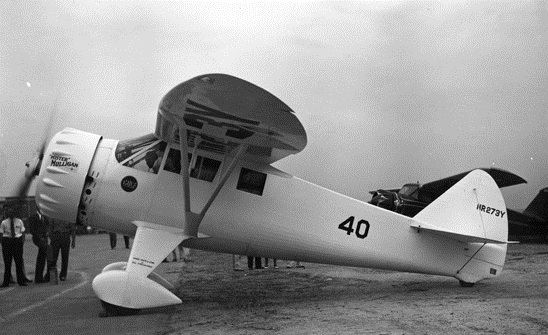
Development of Jet-Powered Aircraft
The first airplane to be powered by something other than a propeller was the Coanda-1910, designed by Henri Coanda. He referred to his propulsion system as a “turbo-propulsor.” However, it was only a ducted fan with a centrifugal blower driven by a piston engine through a shaft, the air exhausting into a duct and thus providing jet thrust. The aircraft reportedly took off, but it was underpowered and crashed.
Even in the early days of WWII, German and British aeronautical engineers were concurrently (but independently) working on the turbojet engine, which provided pure jet thrust. This engine type soon led to the development of new aircraft designs with revolutionary flight capabilities. In 1929, Frank Whittle began work on his series of centrifugal gas turbine designs. Still, for various reasons, his first practical jet engine was not produced until 1937.
The German Heinkel 178 made the first jet-powered aircraft flight in late 1939. This diesel-fuel-burning jet engine was designed by Hans von Ohain, who filed for a patent on the concept in 1935. However, Frank Whittle formally patented the jet engine in 1930, seven years before Ohain’s patent application was filed. For this reason, Frank Whittle is generally recognized as the “Father of the Turbojet Engine.”

The first fully operational turbojet-powered aircraft was not introduced into service until 1944, in the form of the British Gloster Meteor and the German Messerschmitt Me 262, nicknamed “Schwalbe” (“Swallow”) in fighter versions or “Sturmvogel” (“Storm Bird”) in fighter-bomber versions. It was the Gloster Meteor, which was the first jet to down another aircraft. The first American turbojet-powered aircraft was the Bell P-59 Airacomet, which flew in 1942. It offered no operational advantage over existing propeller-driven airplanes and was never flown in combat. The next jet, the Lockheed P-80, reached operational flight status toward the end of 1945 and, like the Gloster Meteor, saw some limited use over Germany before the end of WWII. The P-80 was soon replaced by the highly successful swept-wing F-86 Sabre, for which nearly 10,000 aircraft were built.
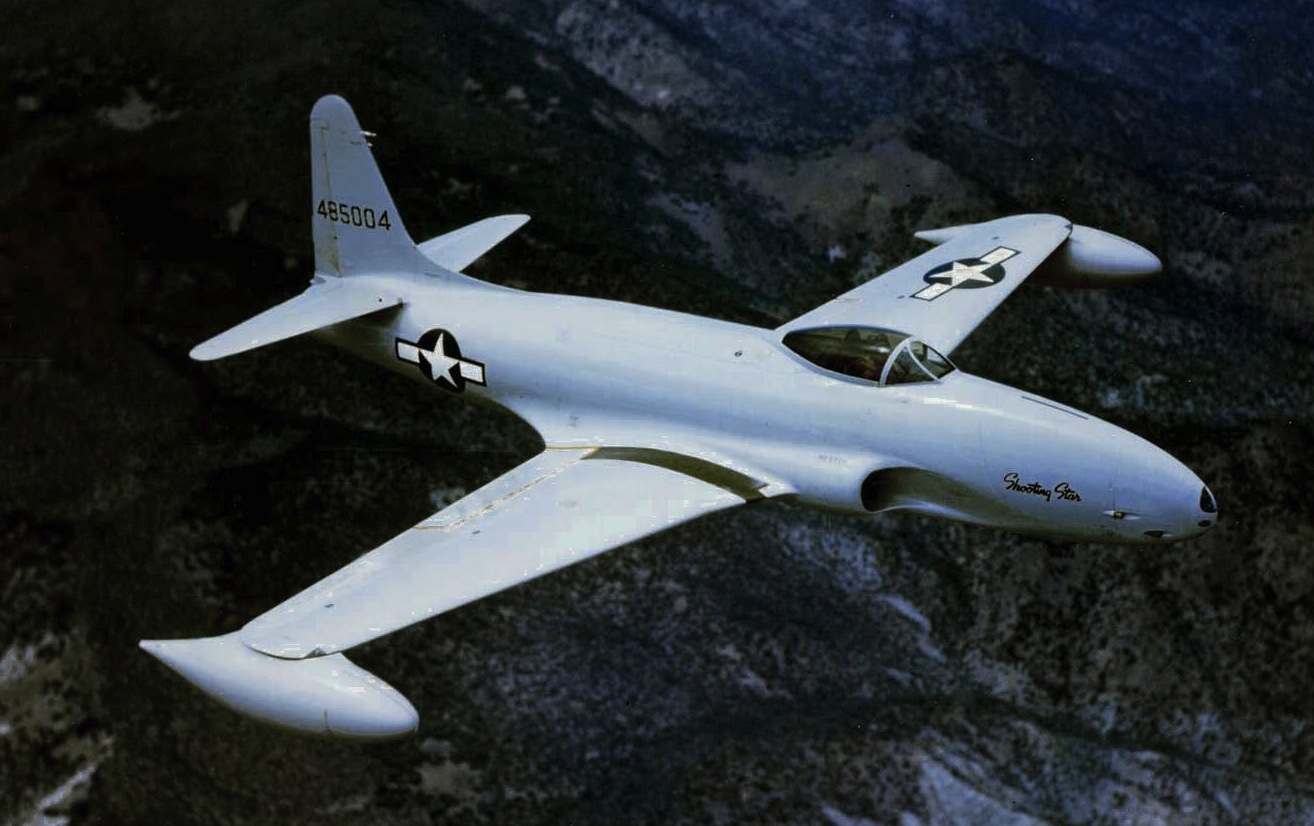
The invention of the turbojet engine soon led to the development of the axial flow turboshaft engine, designed to drive a propeller rather than produce pure jet thrust from the engine exhaust. The better performance, smooth running, quietness, and reliability of turboprop engines soon rendered most piston-engine-powered propeller airliners obsolete. The increased performance and range of turboprop “jet” airplanes enabled transcontinental and transoceanic flights in pressurized cabins, operating in smoother air at higher altitudes. In 1953, the four-engine British Vickers Viscount inaugurated the world’s first turboprop-powered airline service. The Viscount was sold to many airlines worldwide and remained operational until the mid-1970s.
In the U.S., the Lockheed Electra was a widely used medium-range, four-engine turboprop that saw airline service during the 1960s. However, the Electra model suffered two fatal crashes traced to catastrophic wing flutter. The problem was identified as a pylon-whirl flutter instability, where a lack of structural stiffness in the engine mounts caused resonance with a torsional frequency of the wing. There is also a film of NASA flutter tests of an aeroelastically scaled model of the Electra in a wind tunnel. After the issues were fixed by stiffening the wings and engine mounts, the aircraft went on to be successful. Still, it was soon replaced on long-distance flights by newly developed jet aircraft such as the Boeing 707 and the Douglas DC-8. The military derivative, the P-3 Orion, was only recently retired in 2024 to be replaced by the Boeing P-8 Poseidon.

In early 1950, the turbojet-powered British de Havilland Comet inaugurated commercial jet aircraft transportation. This revolutionary aircraft was highly streamlined, featuring a thin, swept-back wing that housed four jet engines, enabling the airplane to cruise at subsonic Mach numbers of approximately 0.7. However, the aircraft soon suffered a series of sudden and catastrophic crashes and was withdrawn from service. Eventually, aeronautical engineers traced the cause of the Comet’s crashes to airframe failures and explosive decompression arising from metal fatigue originating at stress concentrations formed at improperly drilled rivet holes, especially around airframe cutouts such as windows; the original incident report provides the details. Despite the tragedy of the Comet crashes, which eventually resulted in another quantum leap forward in aviation technology. The redesigned Comet 4 saw airline service until the 1990s as well as military service with the Royal Air Force as the AWACS Nimrod.

What is metal fatigue?
Metal fatigue is the weakening of a metal caused by repeatedly applied cyclic loads, typical of those found in flight structures, resulting in the formation of tiny micro-cracks and then visible cracks. Such fatigue cracks usually occur around stress concentration areas, such as bolt or rivet holes. The subsequent research and understanding of the metal-fatigue problem after the Comet crashes led to significant improvements in the strength and durability of lightweight aluminum structures. For jetliners with pressurized fuselages, the rivet holes needed to be adequately prepared, which meant eliminating the previously used “punch” drilling methods and ensuring the holes were deburred and secondary finished before the rivets were installed.
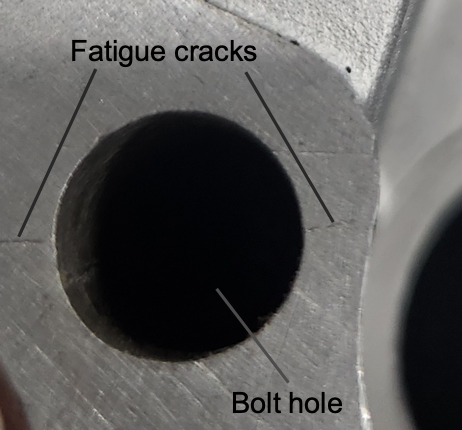
By 1958, the Boeing 707 had been introduced into airline service, enabling it to make nonstop transcontinental and transatlantic flights. With its high aspect ratio swept wing, it could cruise at speeds of up to Mach 0.7. The Boeing 707 and its derivatives became one of aviation’s most successful commercial aircraft, remaining in airline service until the late 1970s. The aircraft could carry 140 to 219 passengers and had a range of up to 5,750 nautical miles.
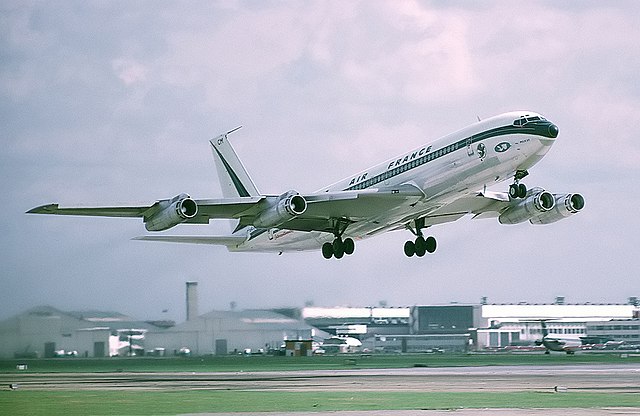
Boeing followed the 707 with a successful series of airliners, including the Boeing 727, 737, 747 “Jumbo-Jet,” 757, 767, 777, and the 787 “Dreamliner,” each new model making use of progressively more refined aerodynamic and structural designs, as well as using more powerful and efficient turbofan engines. The Boeing 727, introduced in the early 1960s, was a distinctive rear-mounted trijet with a T-tail. It was used by many airlines up through the 1990s for short-to-medium-range flights. The Boeing 737, introduced in the late 1960s, has become one of the most successful commercial jetliners ever built, suitable for both short and long-haul flights. The introduction of the Boeing 747 in 1969, with its distinctive upper deck shape and lower seat costs, revolutionized long-haul air travel. The Boeing 747 underwent modifications over the years, including lengthening and other shape changes, to enhance its performance.
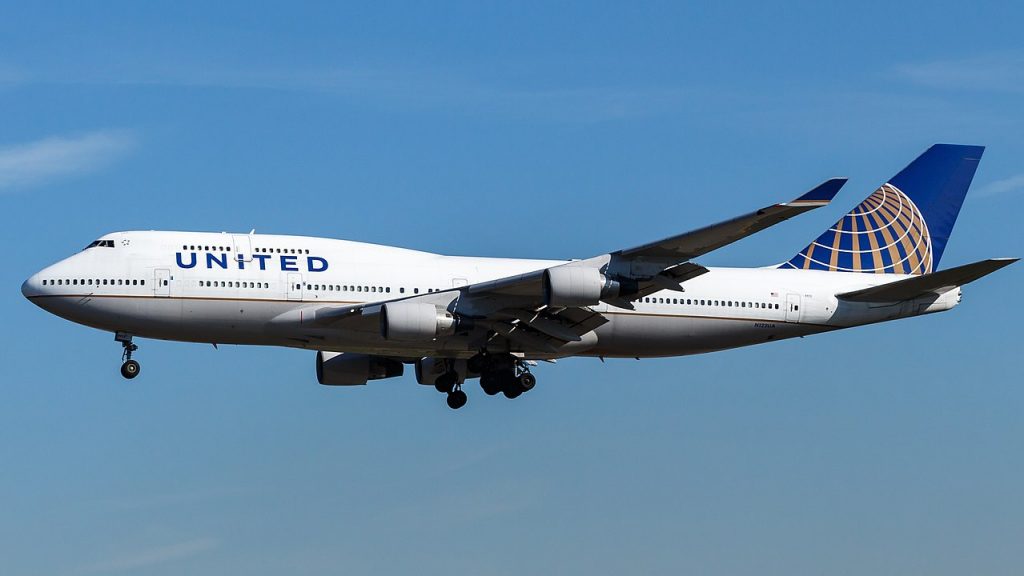
The introduction of the Boeing 787 “Dreamliner” has ushered in a new generation of airliners where a much more significant fraction of the aircraft structure is made of composite materials. Such materials enable reductions in airframe weight, accompanied by commensurate improvements in flight range and operational costs. One advantage of composites is that engineers can tailor the structure’s design to provide the necessary strength while maintaining a lighter overall construction. The elimination of many fasteners (e.g., rivets and bolts) in composite construction also reduces the aircraft’s empty weight, thereby decreasing the likelihood of structural fatigue cracks and the need for repairs.
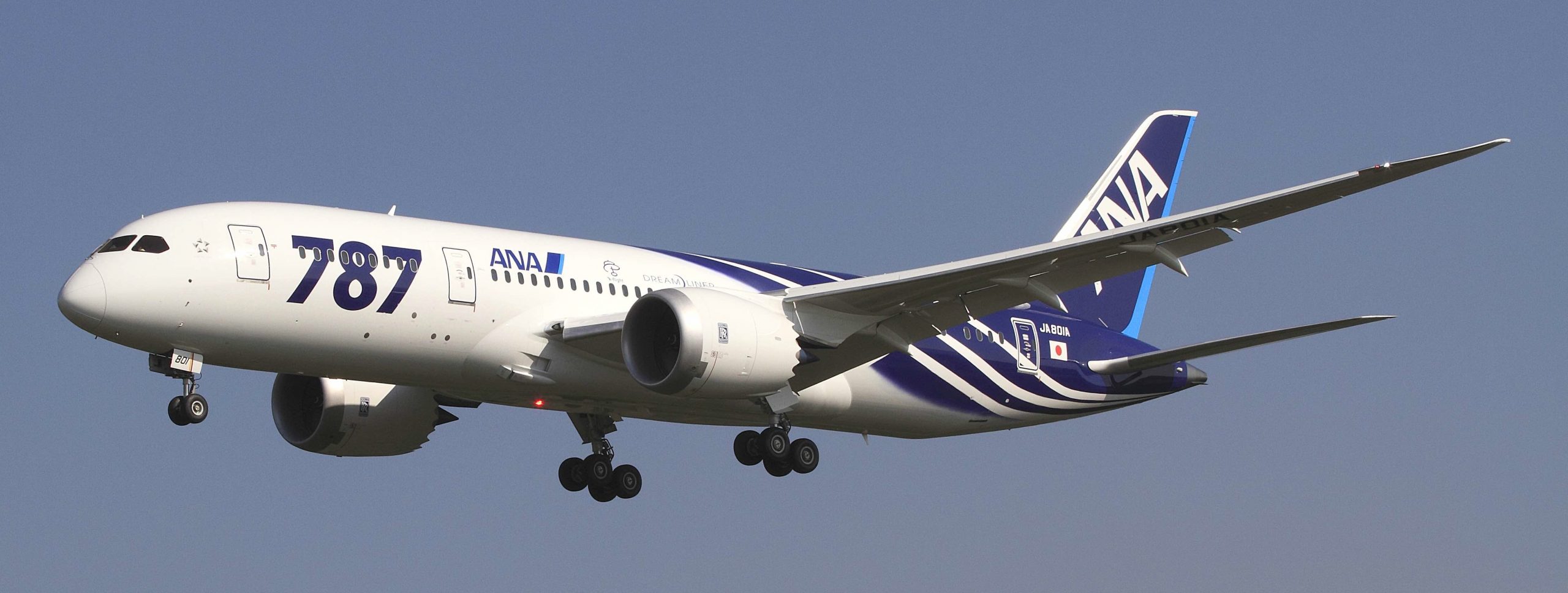
Airbus Industrie has also developed many successful commercial aircraft, including the A300, A320 series, A330, A340, A350, and the giant double-deck A380. The introduction of the Airbus A320 in 1987 marked another milestone in aviation history, as it incorporated advanced composite materials and a standard cockpit layout across its family variants, including the A318, A319, A320, and A321. Over the years, the A320 series has maintained its popularity while competing with Boeing’s 737 series. One of the latest models in the series, the Airbus A350, is constructed primarily from composite materials for its airframe. It has significantly improved overall performance and reduced seat-mile costs, commensurate with those of the Boeing 787.
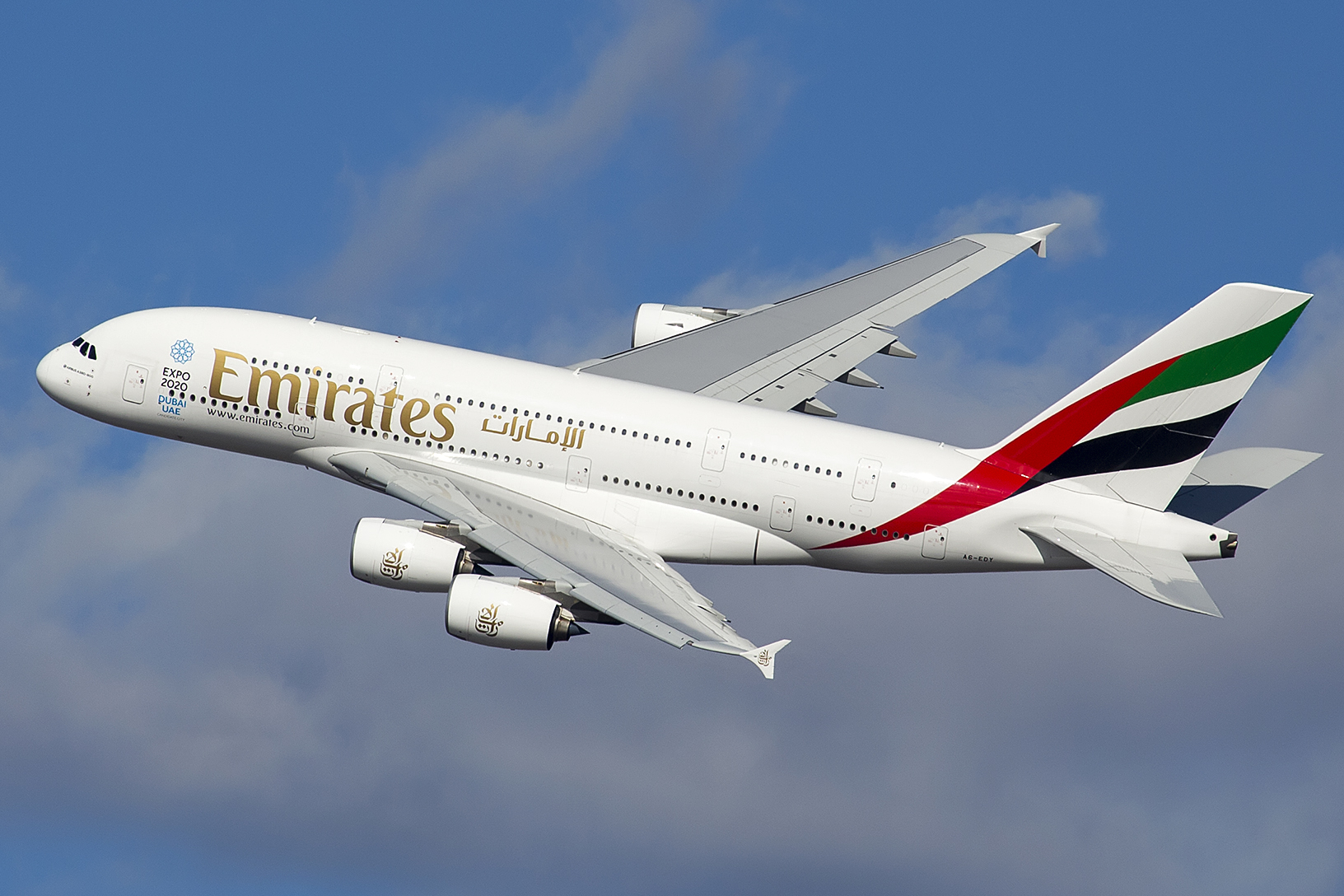
Why does aeronautical progress seem to happen in “fits & starts”?
Improvements in complex engineering systems, such as aircraft, do not happen continuously. Instead, performance improvements have historically occurred in irregular bursts or “fits and starts,” followed by periods of slow growth or even stagnation, as shown in the figure below.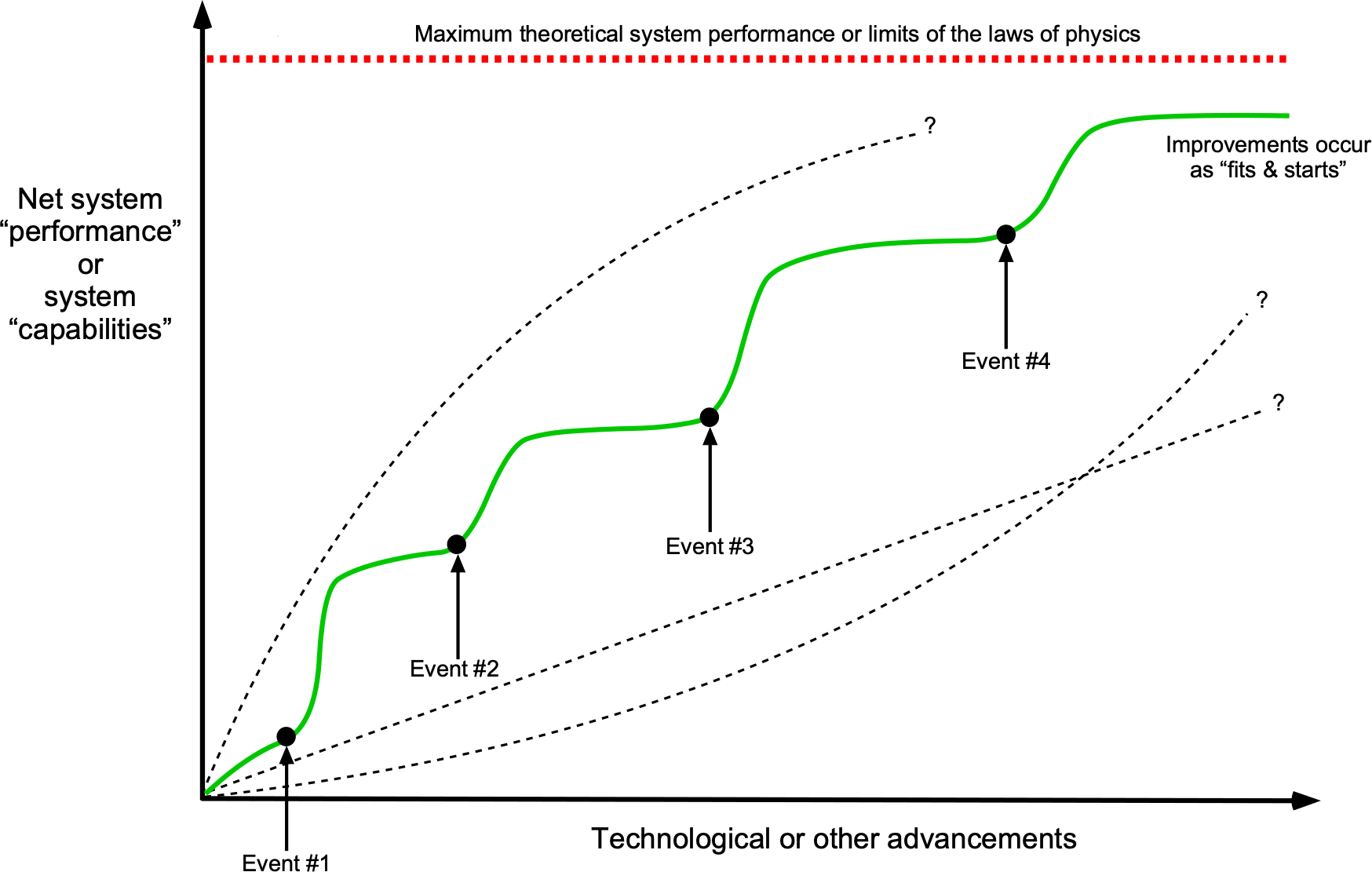
For example, in the case of the development of the airplane, several technological events can be identified that have led to significant improvements in flight performance, such as constant speed propellers, the jet engine, swept wings, supercritical airfoils, stronger and lighter materials made of composites, and, more recently, the use of computers and software engineering. However, not all technical developments may lead to immediate improvements; outcomes from fundamental research may take many years of further development and certification for use on commercial aircraft. In some cases, an event that causes a spurt in improvement may be of non-technical origin, e.g., an open competition to reach some performance goal with significant prize money, e.g., the GPB 1,000 prize for the first cross-channel flight awarded to Louis Blériot in 1909, or more recently, the $US 100,000 GoFly Prize.
Flying Wings & Tailless Aircraft
Flying wings and tailless airplanes hold a significant place in aviation. In the early 1900s, John W. Dunne developed the concept of a tailless airplane, believing that removing the tail surfaces could reduce drag and improve flight performance. His first design, the Dunne D.5, which was flown in 1910, featured biplane wings with their leading edges swept back at a steep angle. There was significant nose-down wing twist or washout over the outer wing panels, which provided the airplane with sufficient longitudinal and directional (yaw) stability. When this airplane crashed in 1911, it was rebuilt as the Dunne D.8. Although these early tailless concepts were capable of flight, they did not exhibit any improvements in flight performance over other types of airplanes.
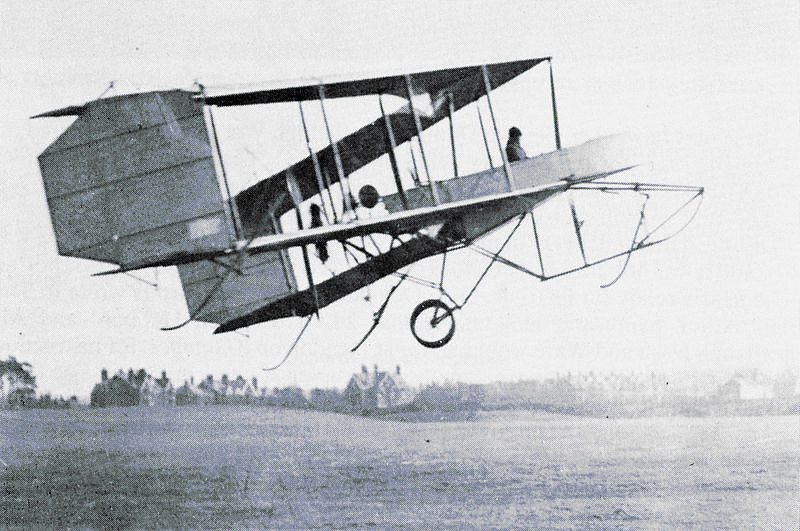
During the interwar period, German and American engineers revisited the flying wing concept, refining the design and addressing challenges encountered by earlier concepts. The development of tailless gliders and the jet-powered Horten Ho 229 by the Horten brothers, contributed further to the evolution of the flying wing concept. The Messerschmitt Me 163 Komet, a rocket-powered tailless fighter of WW2, designed by Alexander Lippisch, demonstrated the potential of using flying wing designs for high-speed flight. The Northrop Corporation also developed several flying wing concepts in the 1930s and 1940s. The Northrop N-1M, depicted in the photograph below, was an experimental flying wing aircraft that significantly contributed to proving the viability of the flying wing concept. Northrop’s later work on the YB-49, a large turbojet-powered flying wing bomber, highlighted the aerodynamic and low radar cross-section advantages of the configuration. However, it also exposed challenges in maintaining stability and control at higher airspeeds, and for many reasons, it did not enter serial production.
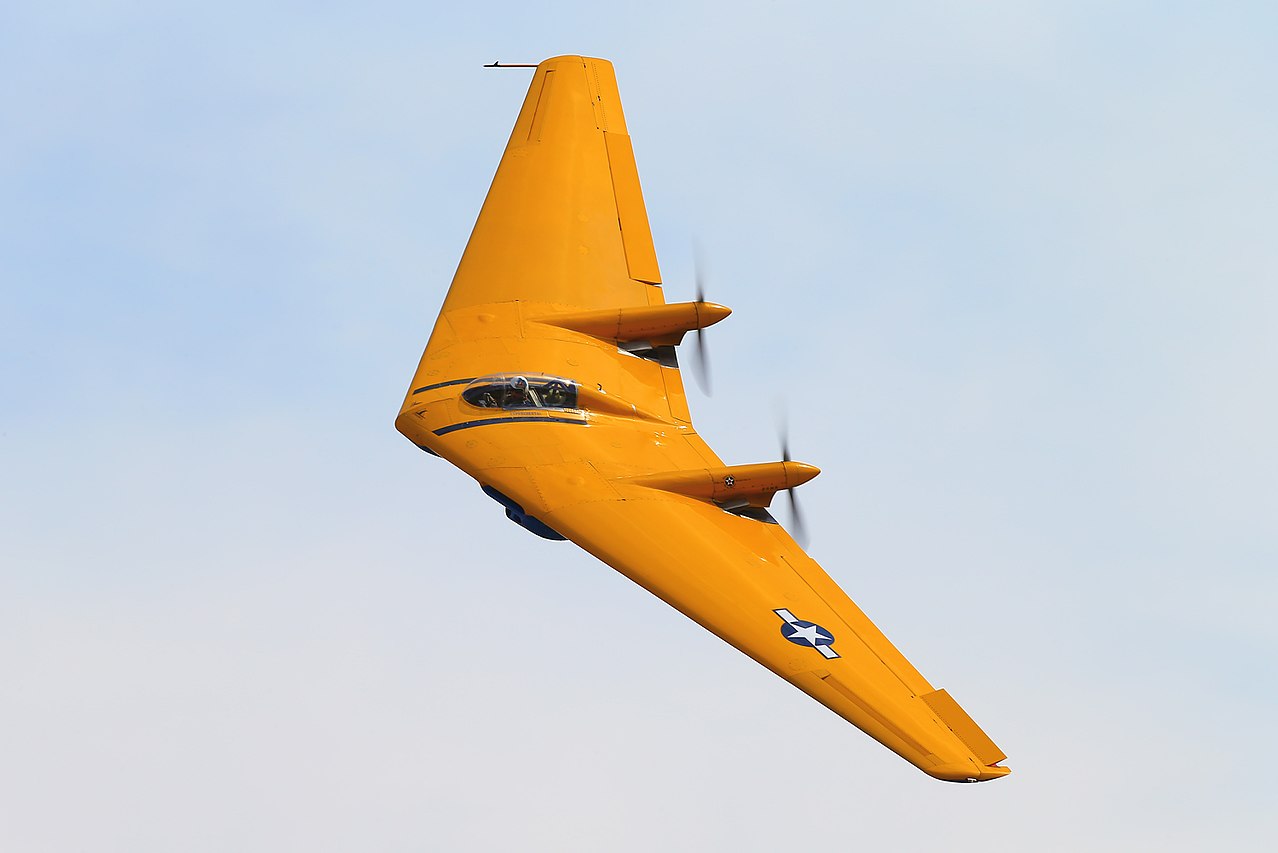
The flying wing concept underwent a resurgence during the 1980s, with the development of Northrop Grumman’s B-2 Spirit stealth bomber, as shown in the photograph below. The B-2, which entered service with the U.S. Air Force in the early 1990s, incorporated advanced airframe materials, fly-by-wire flight controls, stealth technology, and aerodynamic principles that addressed many of the shortcomings of earlier flying wing designs. The B-2 employs actively controlled split flaperons located at the wingtips, which give the airplane positive directional stability and control. Its smooth, blended aerodynamic surfaces minimize drag and also reduce its radar cross-section, making it highly effective in evading enemy radar. With its high payload and long range, it has become one of the most effective military bombers in history. The B-21 Raider is a next-generation stealth bomber, first flown in 2022 and currently in final development, designed to replace the now aging B-2.

Helicopters & V/STOL
Helicopters are a form of vertical takeoff and landing (VTOL) aircraft. They can take off and land from almost anywhere, hover motionless in the air, or fly in nearly every direction at the pilot’s whim, which is a tremendously valuable capability for both civilian and military applications. However, the development of helicopters, a form of rotorcraft, lagged behind that of airplanes by almost 30 years, requiring a greater understanding of aeronautical technologies for their ultimate success. Jacob Ellehammer of Denmark was one of the pioneers of the helicopter, and his counter-rotating coaxial rotor machine was photographed in flight as early as 1913, as shown below.
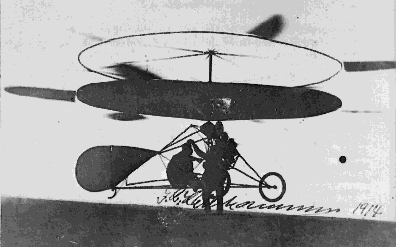
Ellehammer’s machine made brief hops off the ground but could not fly forward or perform any useful actions. The photographs of his attempts clearly show daylight under all the wheels, confirming the attempt at hovering flight. While Ellehammer did not invent the helicopter, he did make an important and recorded contribution to the advancement of helicopter flight. Paul Cornu and Louis Breguet of France also made notable attempts to build and fly helicopter contraptions between 1906 and 1909. Still, based on the limited photographic evidence, they were all failures. Many other attempts were made to develop and fly helicopters in the following decade, but without much success.
The first successful rotating-wing or “rotorcraft” concept was not a helicopter but an autogiro with an unpowered rotor. Juan de la Cierva’s C-4 autogiro flew in 1923, and many other autogiro designs soon followed. The autogiro could take off and land at very low airspeeds but could not hover; the aircraft required forward motion through the air for the rotor to self-rotate or autorotate. Nevertheless, the autogiro proved to be a testbed for the development of the helicopter, but this would not come about for more than a decade. Indeed, it was Raoul Hafner, around 1936, who integrated Cierva’s flapping hinge rotor design with his cyclic pitch design to create the fully articulated rotor system, which ultimately proved to be the key to the helicopter’s success. However, it was not until the mid-1930s that helicopters gained significant success. It was not until the end of WWII that they became a valuable part of the aviation spectrum for both military and civil use.
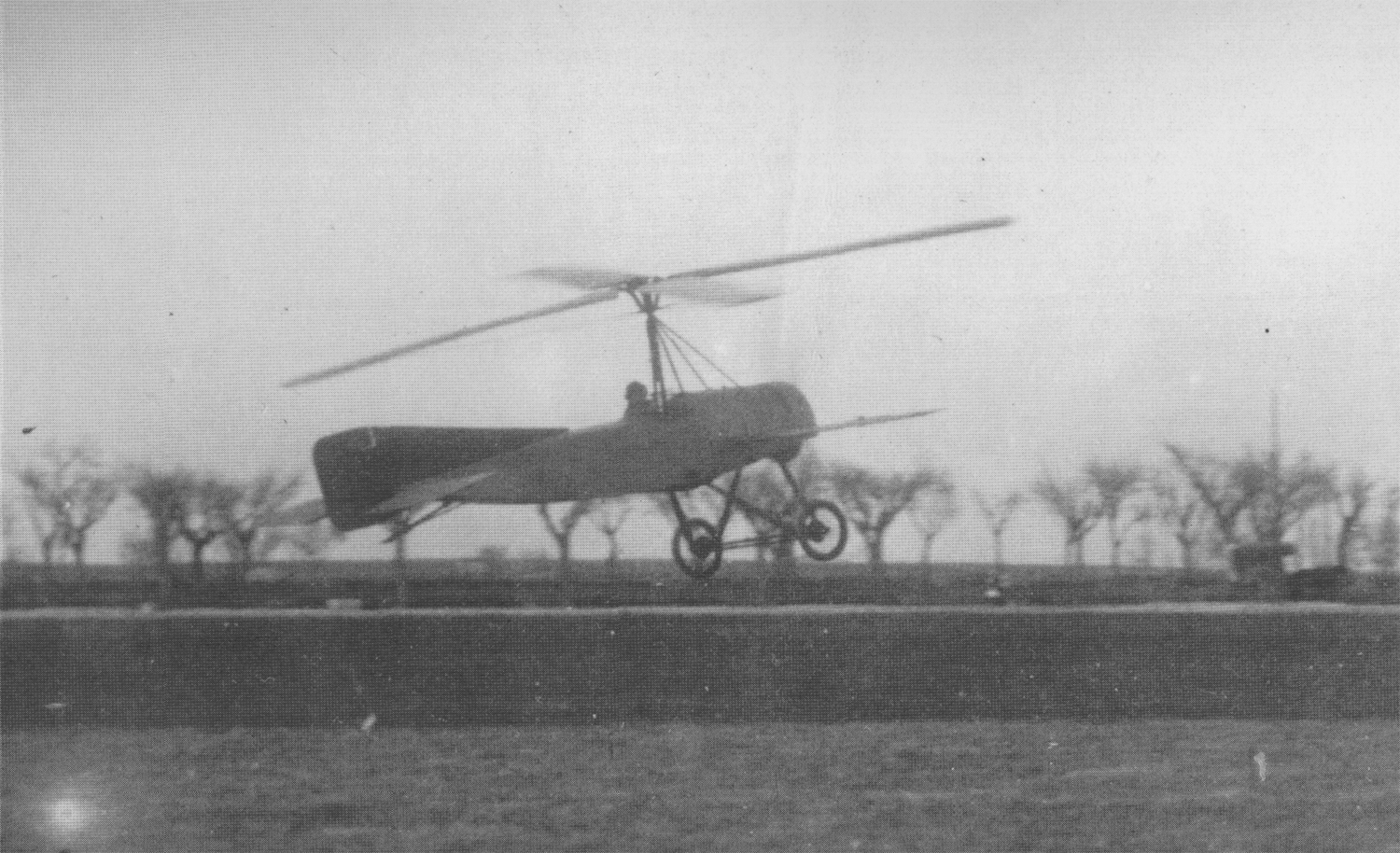
Helicopter performance and other capabilities advanced significantly during the 1940s and 1950s. The first civil-certified helicopters included the Bell-47, shown in the photo below, the Bristol Sycamore, and the Sikorsky S-55. The Sikorsky UH-60 Black Hawk, introduced in the late 1970s, would become one of the world’s most successful military helicopters.

Sustained development in helicopter technology over the last half-century has led to many other successful military and civil helicopter designs. Today, helicopters are increasingly constructed from advanced composite materials and utilize various new aerospace technologies to enhance their performance, reliability, and safety. The EH-101, as shown in the photograph below, is notable for its use of an active vibration suppression system, which minimizes the vibratory loads transmitted from the rotor to the fuselage. The EH-101 used the BERP (British Experimental Rotor Program) rotor blade design. The initial BERP rotor blades were developed in the late 1970s to mid-1980s as a joint venture program between Westland Helicopters and the Royal Aircraft Establishment (RAE). The goal was to enhance the helicopter’s lifting capability and maximum speed by utilizing new blade tip designs made possible by the use of composite materials.
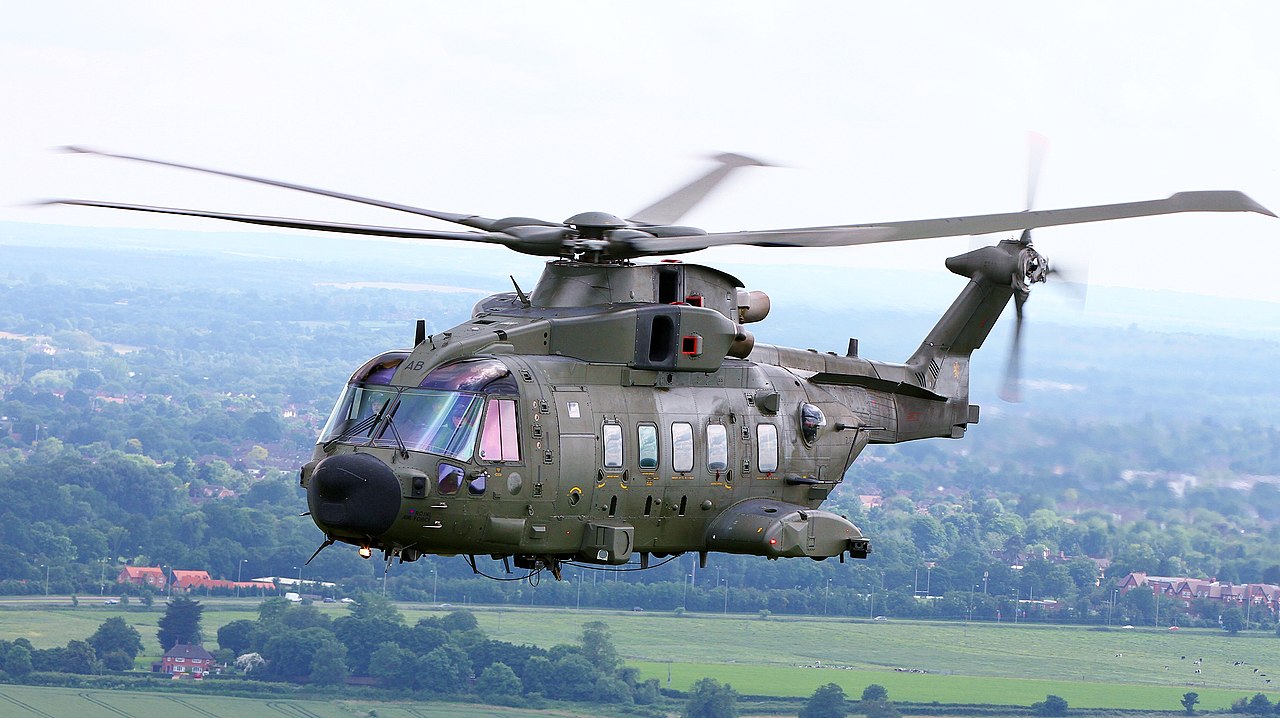
Helicopters are low-speed aircraft with maximum flight speeds of only about 150 knots (173 mph, 278 km/h), which is a limitation caused, in part, by the aerodynamics of the rotor system. In addition, a helicopter is unique in that, at higher forward flight airspeeds, the rotor experiences both compressibility effects and stall effects simultaneously. To overcome such inherent limitations, some helicopters have been fitted with auxiliary fixed wings or a separate propulsion system, known as compound helicopters. These devices can allow them to fly faster, but usually at the expense of carrying a less useful load. Many uncrewed drones have recently been designed with quad-rotors, allowing vertical takeoff and landing. However, the quad-rotor concept is not new, having been pioneered by Oehmichen and DeBothezat, amongst others, as early as 1907.
Other types of aircraft, such as those with vertical and short takeoff and landing (V/STOL) capabilities, which can fly faster than helicopters, have always intrigued aerospace engineers. Many such V/STOL aircraft concepts have been designed over the decades. As shown below, the so-called V/STOL Wheel of Misfortune catalogs the most prominent attempts to combine the vertical takeoff and landing (VTOL) capabilities of a helicopter with the forward flight capability of an airplane. The Wheel of Misfortune also reminds aeronautical engineers that designing a vertical flight aircraft is challenging and not to “reinvent the wheel,” as “lessons learned” are always a powerful tool to help in engineering design.
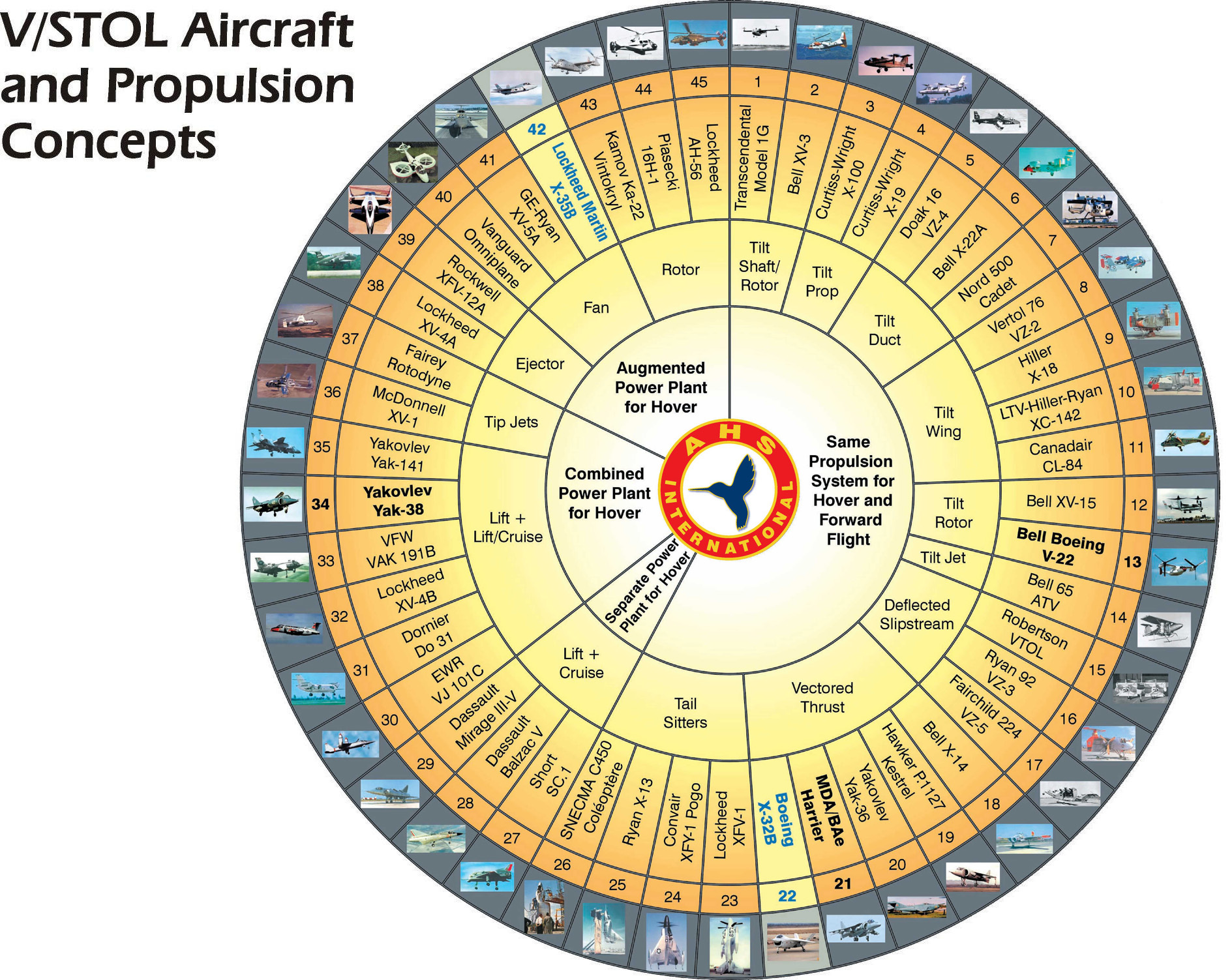
Only three of the numerous V/STOL aircraft shown on the wheel that were built and tested have been successful. The best-known V/STOL aircraft is the McDonnell-Douglas AV-8B Harrier, which was developed from an original British Hawker-Siddeley design. In recent years, a version of the F-35 Lightning Joint Strike Fighter has been designed for vertical/short takeoff and landing (V/STOL) flight. This fighter aircraft type features a powerful counter-rotating lift fan located in the fuselage. Interestingly, the F-35 (originally known as the X-35) was the only X-plane to enter production.
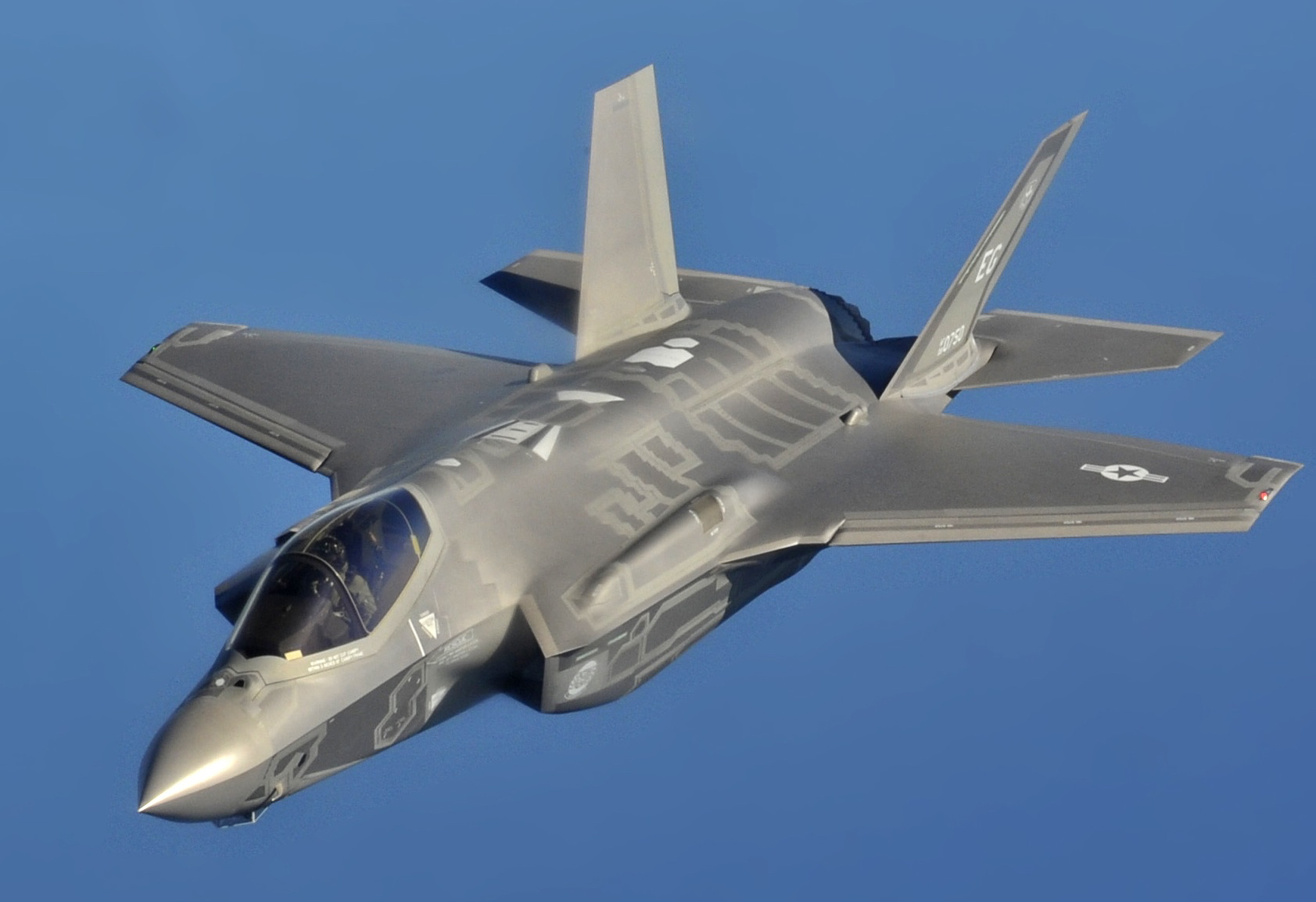
Hybrid rotorcraft, such as the notorious Bell-Boeing V-22 Osprey, attempt to combine the vertical takeoff and hover capabilities of helicopters with the increased speed and flight efficiency of airplanes. However, such tiltrotor concepts are not as practical as a helicopter for the tasks a helicopter excels at (e.g., hovering or operating at low airspeeds) and not as effective as an airplane for the tasks an airplane excels at (e.g., flying faster over longer distances while carrying a larger payload). Nevertheless, the tiltrotor concept is integral to the military aviation spectrum. It remains to be seen whether the tiltrotor can ever succeed in the civil market, for example, in the form of the Leonardo/AgustaWestland AW609, formerly the Bell/Agusta BA609.
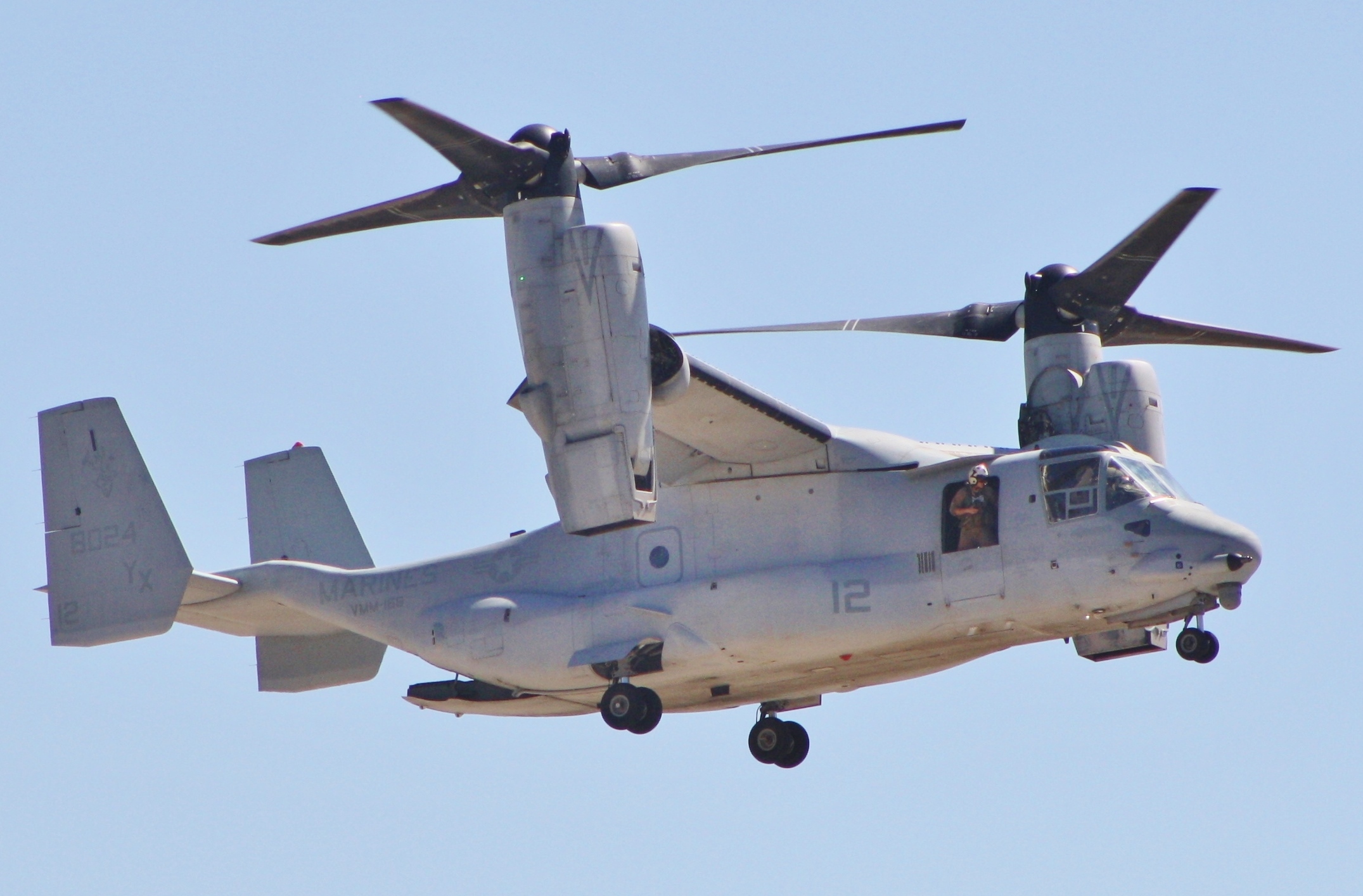
Supersonic Aircraft
The first American supersonic research aircraft was the Bell X-1, a rocket-powered aircraft capable of flying faster than the speed of sound or a Mach number of 1 (approximately 761 mph or 1,225 km/h) in level flight. It was the first of the X-planes, a series of American experimental aircraft designated for in-flight testing of new aeronautical and space technologies. The X-planes were operated by the NACA and later by NASA in conjunction with the U.S. Air Force.
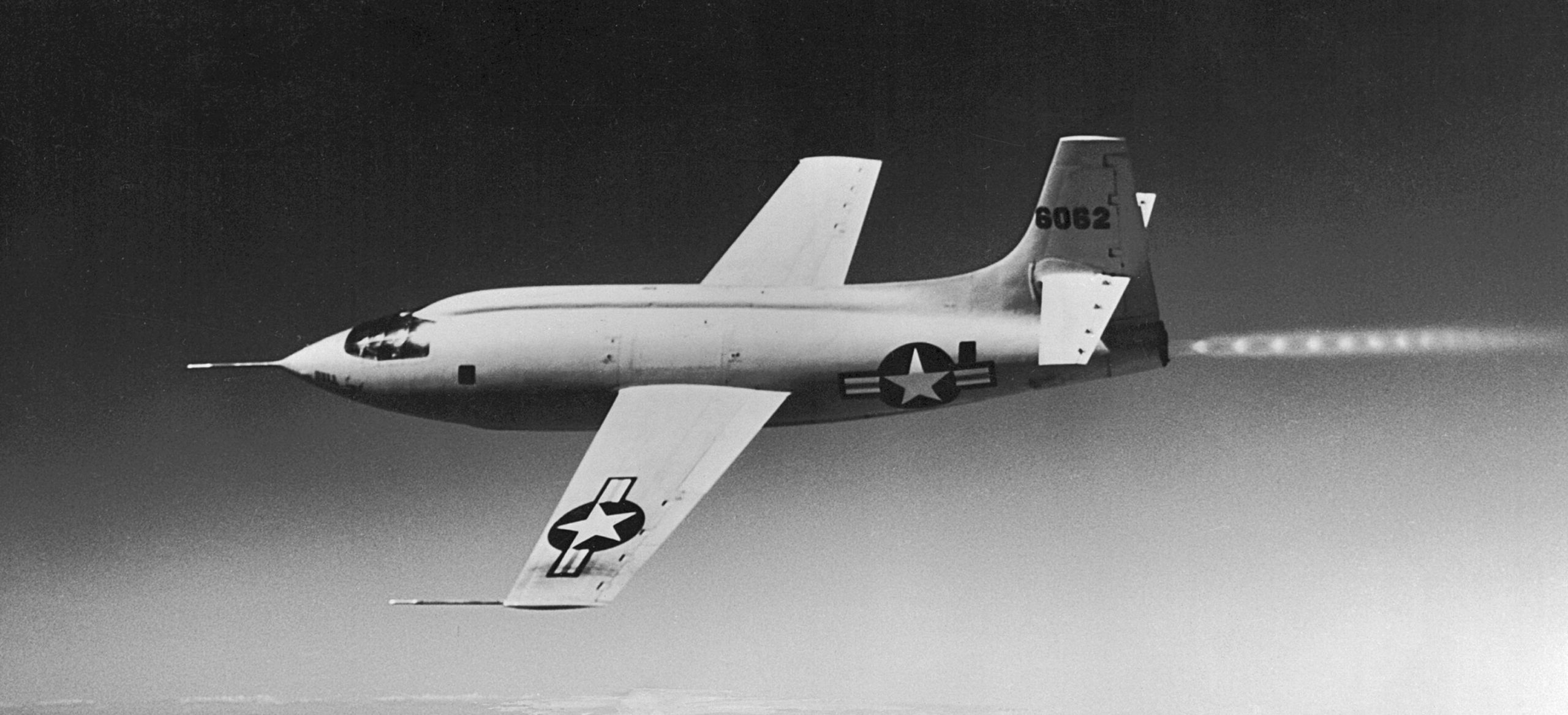
With the introduction of the turbojet engine, new aircraft were designed to fly faster and higher. The invention of the afterburner, in which extra fuel is burned in the exhaust of a turbojet engine, resulted in significant increases in thrust, allowing such aircraft to accelerate through the “sound barrier.” However, the term sound barrier is a misnomer because there is no natural barrier to supersonic flight. It is simply a manifestation of what happened when early airplanes encountered the rapid increase in aerodynamic drag in the transonic flight regime, which straddles the transition from subsonic to supersonic flight speeds.
As a result, it was only a short time before new types of supersonic aircraft were developed. The Convair F-102 Delta Dagger and the Lockheed F-104 Starfighter marked significant advancements in supersonic interceptor design during the 1950s. The F-102, developed to counter Soviet bombers, featured a delta wing design and the area rule to reduce drag, achieving high-speed interception capabilities with its radar and air-to-air missiles. It saw extensive service in the late 1950s and 1960s.
The F-104, designed by Clarence “Kelly” Johnson, was a revolutionary aircraft renowned for its slender fuselage and compact wings (as illustrated in the figure below), which enabled it to reach Mach 2 speeds with advanced avionics and a powerful General Electric J79 turbojet engine. Used globally and setting several speed and altitude records, the F-104 was dubbed the “Missile with a Man in It” for its impressive performance, despite a mixed service record marred by high accident rates. The F-104 and other supersonic airplanes pushed the boundaries of supersonic flight and interceptor design, reflecting the intense technological competition of the Cold War and influencing future military aircraft innovations.

A distinctive feature of supersonic aircraft designs is the use of thin, highly swept (sometimes delta-shaped) wing planforms and narrow, streamlined airframes, which enable efficient supersonic flight. However, a problem is the kinetic aerodynamic heating generated by skin friction at such high airspeeds. This effect significantly raises the airframe’s temperature, causing it to expand, which necessitates the careful design of the aircraft’s structure and the selection of materials from which it is constructed.
Over the last five decades, various types of supersonic aircraft have been developed. Still, nearly all have been used for research and military purposes, primarily as military interceptors and fighter aircraft. One of the most well-known is the McDonnell Douglas F-4 Phantom, which had a top speed over Mach 2.2. This supersonic airplane could carry a wide range of weapons, including air-to-air and air-to-ground missiles and bombs. Shortly after its introduction in 1959, the F-4 set many world records for speed and altitude.
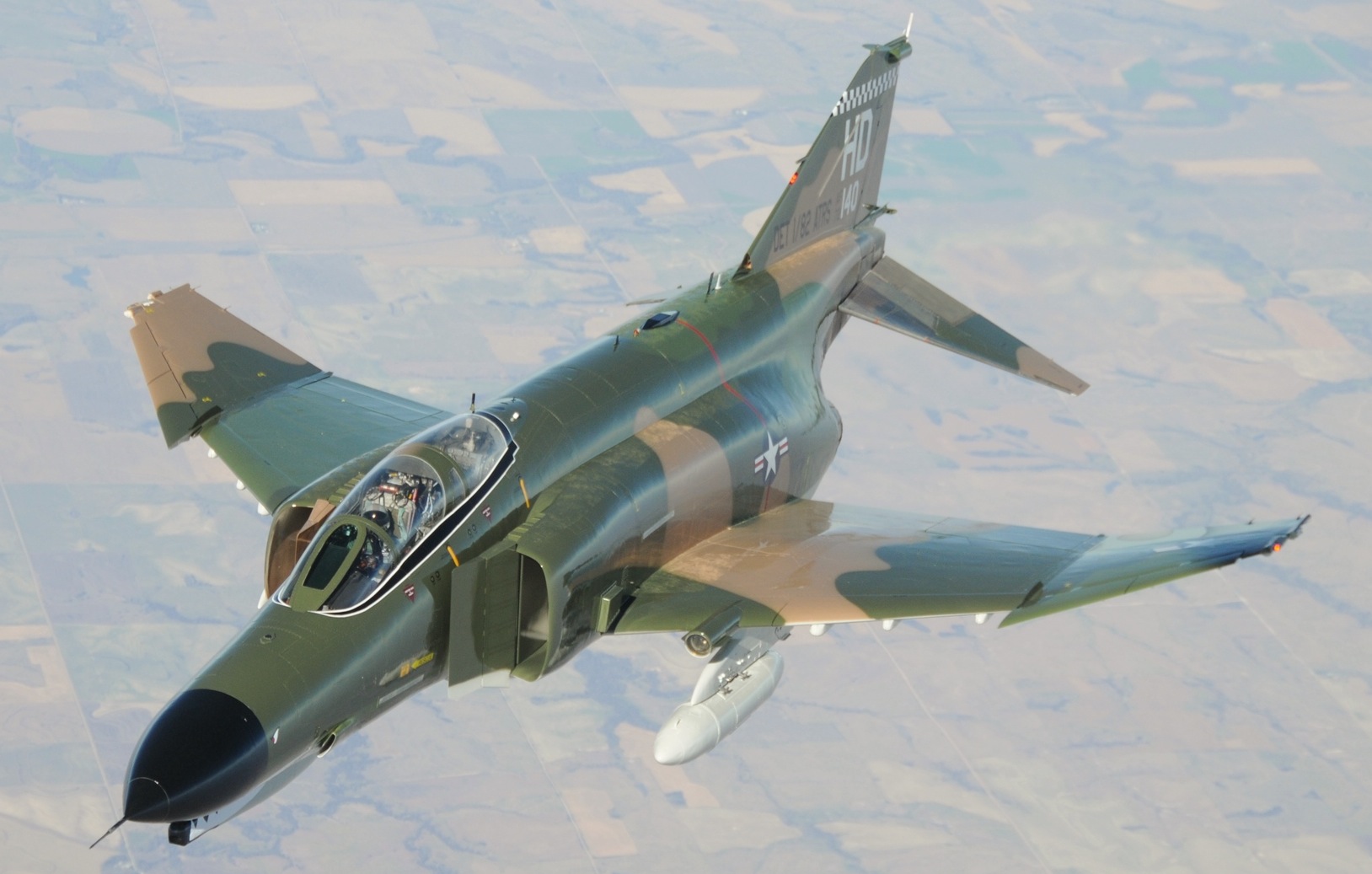
Today, several military supersonic aircraft are operational, including the U.S. Air Force’s F-22 Raptor, as shown in the photograph below, and the F-35 Lightning II, both of which can reach speeds well above Mach 1. The Russian Air Force operates the Sukhoi Su-57, a fifth-generation stealth fighter capable of exceeding Mach 2, and the Sukhoi Su-35, renowned for its high maneuverability and speeds exceeding Mach 2. Additionally, the MiG-31, another Russian aircraft, can achieve speeds up to Mach 2.8, serving primarily as an interceptor. These supersonic aircraft leverage their capabilities for various roles, including air superiority and intercept missions.

Two civilian supersonic transport (SST) airliners, the Anglo-French Concorde and the Russian Tupolev Tu-144, have been built and flown in airline service. Both were technically successful in achieving sustained supersonic flights with passengers, but were economically unsuccessful and have now been retired from operational service. The Concorde cruised at over twice the speed of sound at Mach 2.04 (1,354 mph or 2,180 km/h), with seating for up to 128 passengers.
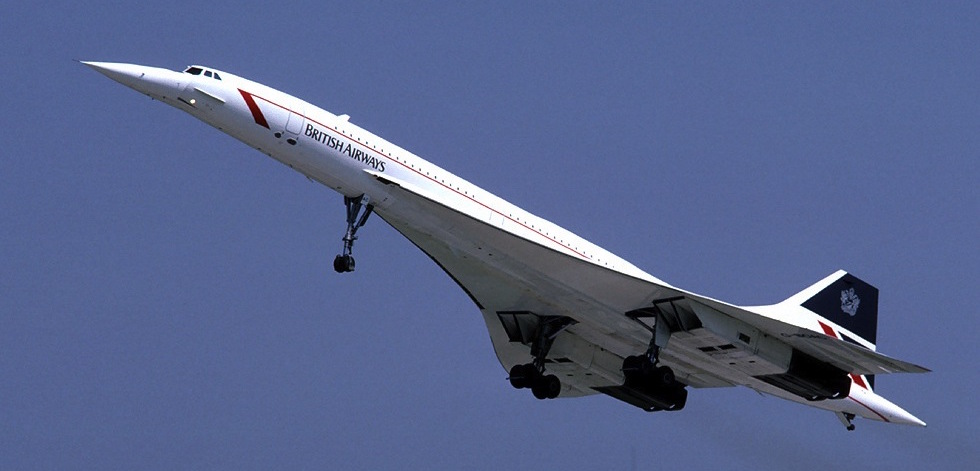
The economics of operating the Concorde were questionable even at the design stage. One reason is that it needed to be bigger to carry enough fare-paying passengers to generate profit for the airlines. The aircraft’s high noise levels during takeoff and landing were also a significant concern when more stringent noise certification requirements were imposed on other (subsonic) aircraft. Boeing also considered developing an SST, the Boeing 2707. Still, it was not built after it was predicted that even with a larger aircraft carrying more passengers, the economics of an SST for US airline use would be unviable.
The Concorde ceased operations in 2003 after 27 years of service. Its demise was primarily due to a combination of factors, including high operating costs, limited passenger capacity, the impact of the 2000 crash of Air France Flight 4590, and the aftermath of 9/11, which led to increased safety scrutiny and a decline in public confidence. The decrease in demand for supersonic travel and rising fuel prices also contributed to its financial challenges. The last flights of the Concorde in 2003 marked the end of an era for commercial supersonic travel, remaining forever as an iconic symbol of aeronautical engineering and supersonic aviation.
Although higher operating costs and low demand from potential passengers have limited the success of supersonic transports, there has been renewed interest in building smaller supersonic business jets (SSBJ). While an SSBJ has yet to fly, one or more designs will likely fly by the decade’s end. The appeal of vastly reduced travel time from sustained flight at supersonic speeds remains intriguing to both engineers and passengers.

Besides developing the relevant aeronautical technologies to make an SSBJ possible and economically viable, a concern with all supersonic aircraft is the formation of “sonic booms.” Such sonic booms are the sound signature of the aircraft’s shock waves, which project from the aircraft to the ground. The sonic booms produced by a supersonic aircraft sound like two explosions in quick succession; they are intense enough and disruptive to human life that supersonic flight over land is prohibited by civil certification authorities such as the FAA and EASA. The FAA’s regulations can be found in 14 CFR Part 91.817, which prohibits anyone from operating a civil aircraft in supersonic flight over land in the U.S. or from a distance offshore where a sonic boom could reach U.S. shores. Listen here to the sonic booms produced by the Concorde as it flew over a ship in the Atlantic Ocean.
However, the problem of sonic booms may not be intractable. With the appropriate design of the supersonic aircraft’s shape, it is possible to reduce the sound pressure or “soften” the noise. In 2017, NASA issued a request for proposals to develop its Quiet Supersonic Transport (QueSST) low-boom flight demonstrator. This program called for designing and testing a new X-plane to support future generations of supersonic transport (SST) aircraft. Lockheed Martin was awarded a contract to fly the X-59 QueSST (“Quiet Supersonic Technology”) within the 2022–2024 timeframe; however, it appears that the airplane may now be expected to fly sometime in 2025.
Regional Aircraft
Large, modern commercial aircraft such as the Boeing 787 and Airbus A350 are sophisticated technological achievements that, without a doubt, are marvels of modern aeronautical engineering and exemplars of the engineering field. These aircraft incorporate advanced materials, such as carbon-fiber composites, and cutting-edge avionics, which enhance performance and fuel efficiency while reducing environmental impact. Additionally, the aircraft industry continues to develop smaller, more fuel-efficient airliners, such as regional jets, often referred to as “RJs,” which play a crucial role in the short-haul marketplace, specifically for flights of less than 1,000 miles. These “mini-airliners,” such as the Bombardier CRJ and Embraer ERJ series (shown below), now firmly dominate the majority of short-haul civil aviation markets. They offer airlines outstanding operational flexibility at a relatively low cost, albeit with some compromises in passenger comfort.
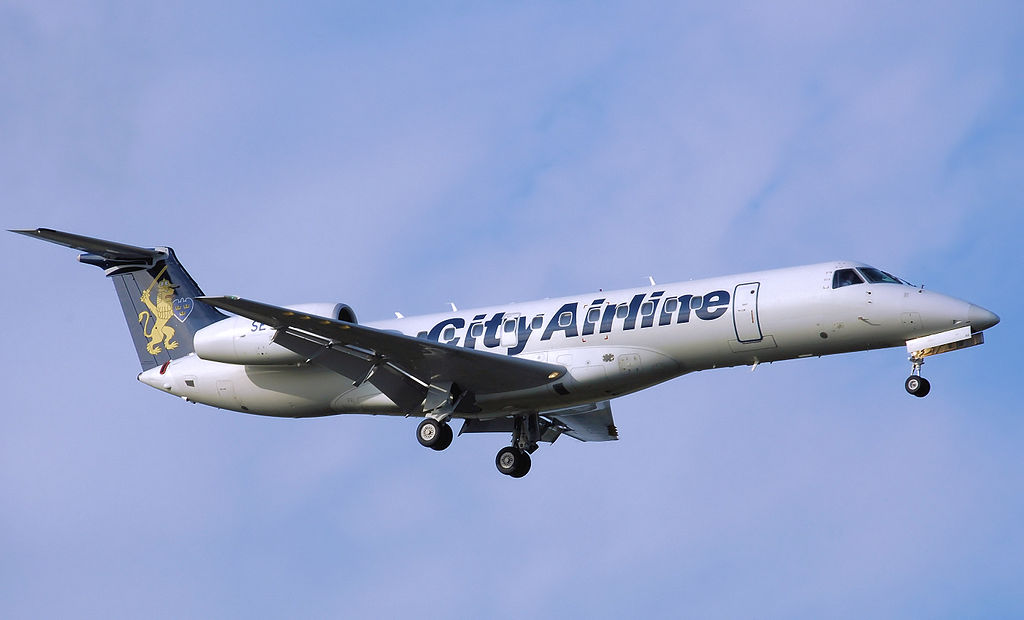
Despite these compromises, RJ manufacturers are making strides in improving the passenger experience through better seating configurations and in-flight amenities. Furthermore, RJs can operate out of smaller airports, providing passengers in many more cities with quick and relatively inexpensive connections to major hub airports for longer-distance flights. This operational flexibility not only expands the reach of air travel but also supports the growth of regional economies and enhances the traveling experience.
General Aviation
General aviation (GA) encompasses all civil aviation operations except for scheduled commercial airline services and military aviation. It connects remote areas, supports emergency services, agricultural operations, and business travel, and contributes significantly to the economy by providing jobs and supporting industries such as tourism, agriculture, and manufacturing.
The GA field has seen many advancements since the golden days of the Piper J-3 Cub, as shown in the photograph below. After WWII, there was a surplus of trained pilots and affordable aircraft. Companies like Cessna, Piper, and Beechcraft began producing small, affordable aircraft for personal and business use. The 1950s saw a significant increase in private pilot licenses and aircraft ownership. Technological advancements continued during the 1960s and 1970s with the introduction of more reliable and efficient aircraft. The general aviation fleet diversified during the 1990s, with the introduction of privately operated helicopters, such as those made by Robinson and Enstrom, as well as personal business jets by Beechcraft and Cessna, and a range of innovative experimental general aviation aircraft. This period also saw the rise of corporate aviation and air taxi services.
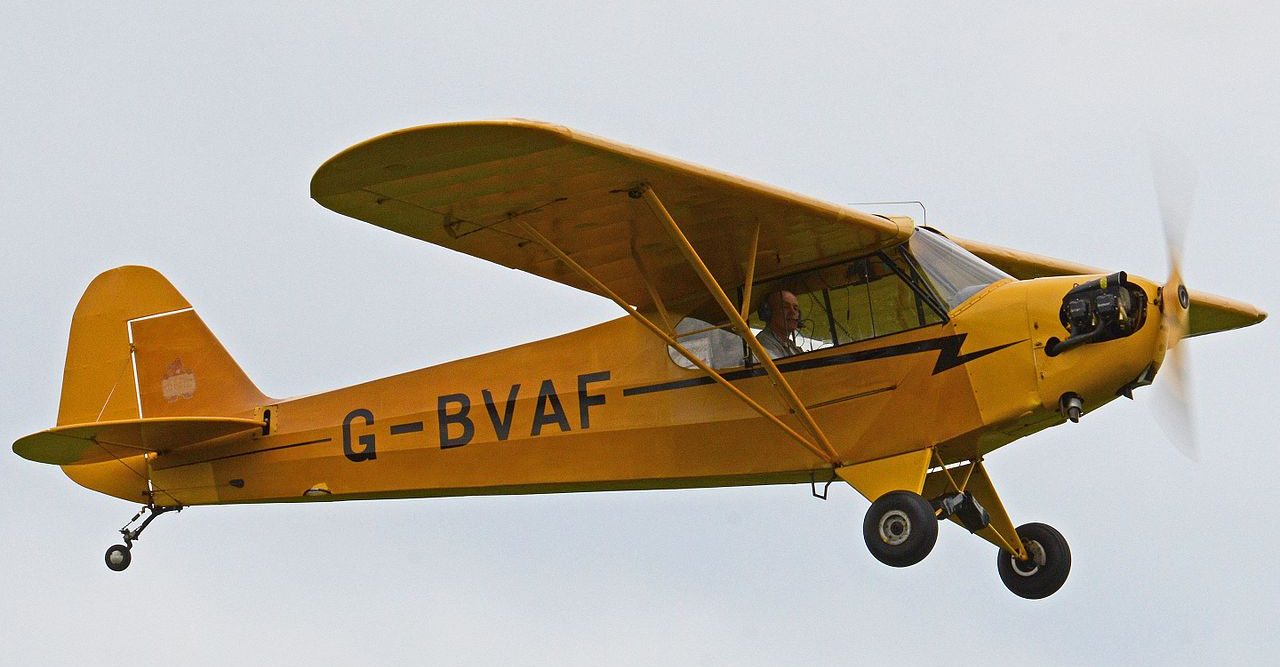
General aviation has continued to evolve in the 21st century, driven by technological advancements and shifts in the regulatory framework. The introduction of light-sport aircraft, advanced avionics, and improved engine technologies has kept general aviation vibrant. Organizations like the Experimental Aircraft Association (EAA) and the Aircraft Owners and Pilots Association (AOPA) have played crucial roles in advocating for the interests of general aviation enthusiasts and professionals. The modern Cirrus SR22, as shown in the figure below, is a low-wing monoplane made of composite materials with a fixed (non-retractable) tricycle landing gear. It is powered by a 310 hp (231 kW) piston engine, and with its smooth and streamlined airframe, this airplane can cruise at over 200 knots (370 km/h), even with its fixed landing gear.
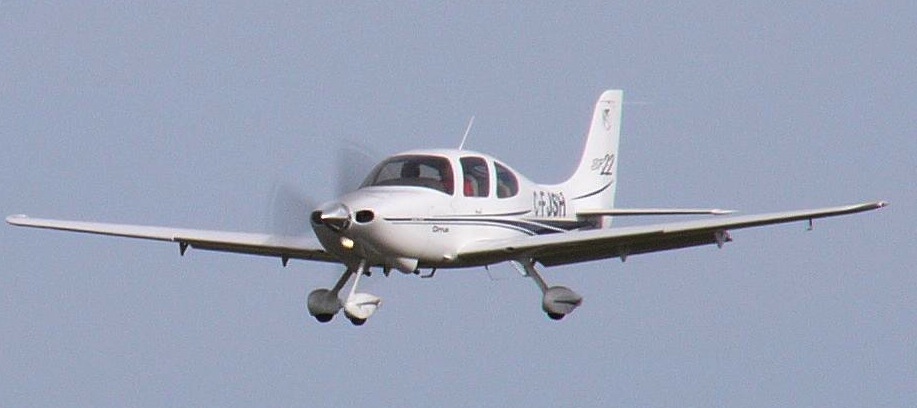
The future of general aviation looks promising with the advent of electric and hybrid-electric aircraft, as well as unoccupied aerial systems (UAS). Rapid developments in electric propulsion systems, particularly for smaller general aviation (GA) airplanes, are driving significant innovation in the field. These developments are evident from the increasing number of electrically powered unoccupied aerial vehicles (UAVs) and the ongoing research and development of all-electric aircraft across various scales. Electrically powered UAVs are proliferating, providing new capabilities and applications in areas such as surveillance, agriculture, and delivery services. All-electric airplanes, such as the Velis Electro shown in the photograph below, are capturing the interest of aeronautical engineers and industry stakeholders, leading to advancements in battery technology, energy efficiency, and aircraft design. These developments promise to make electric aviation more practical and economically viable.
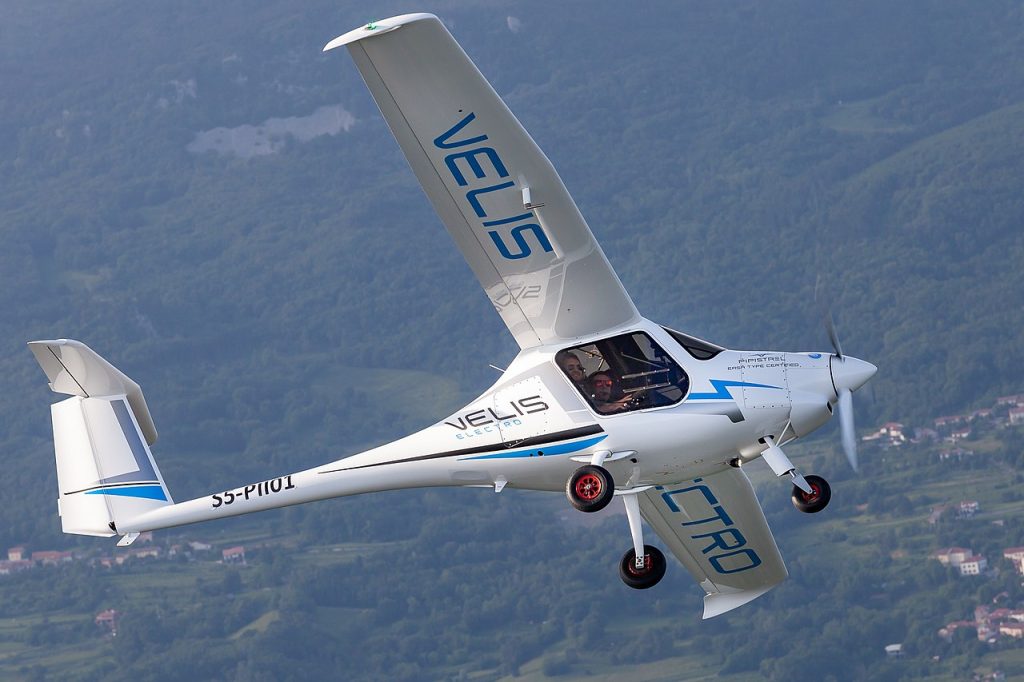
However, the main technical challenges with electric propulsion include the development of battery technology for aeronautical use, primarily to overcome the limitations of their relatively low energy density, i.e., energy per unit weight. Batteries typically have an energy density approximately 50 times less than that of jet fuel, making them currently ill-suited for use in larger aircraft. Nevertheless, hybrid-electric power systems are expected to provide some advancements in the short term. Alternative fuels to jet fuel and gasoline, such as ethanol and synthetic biofuels, are also being explored for use in tomorrow’s airplanes.
As these technologies continue to evolve, more efficient, environmentally friendly, and quieter airplanes will likely become standard in general aviation. This transition towards electric and hybrid-electric propulsion holds the potential to reduce aviation’s environmental impact and opens up new possibilities for innovative aircraft designs and uses. The continued focus on research and development in this area will likely result in significant breakthroughs, transforming the general aviation landscape in the coming decades.
Summary & Closure
The quest for flight dates back to ancient times when humans observed birds soaring effortlessly through the skies and dreamed of achieving the same freedom. Significant strides in human-crewed flight were made in the 19th and early 20th centuries. On December 17, 1903, the Wright brothers achieved the first controlled, sustained powered flight. Their systematic engineering approach to airplane design enabled it to function as a cohesive system, paving the way for rapid advancements in various areas of aviation technology.
Throughout the 20th century, aviation evolved from rudimentary biplanes to sleek jet aircraft capable of supersonic speeds. Aviation played a pivotal role in WWI and WWII, transforming warfare and expanding global connections. Over the last eight decades, research and development by aeronautical engineers have led to technological improvements in aerodynamics, propulsion systems, lightweight composite materials, flight control systems, software engineering, and alternative fuels.
The future of aviation is poised for even more incredible advancements. Reducing an aircraft’s structural weight and substantially improving aerodynamic efficiency remain critical to lowering fuel consumption and operational costs. Electric propulsion systems, particularly for smaller aircraft, are likely to advance further, driven by improvements in battery technology. With continued innovation, aviation and aeronautical engineering will achieve new levels of performance, efficiency, and sustainability.
5-Question Self-Assessment Quickquiz
For Further Thought or Discussion
- What is a patent? Why might someone want to apply for a patent? Some people have argued that the process of patenting nearly every development in aviation technology at the beginning of the 20th century, including that of the Wright brothers, hindered the advancement of aviation and aeronautical technology worldwide. Discuss this viewpoint.
- While the success of aviation depended on the advancement of engine technology, it was also because of the development of suitable fuels. Discuss this viewpoint.
- Over the last century, aircraft have been made of wood and fabric, stressed-skin aluminum, and modern composites. Create a list or table that highlights the relative merits of each construction material, including factors such as material costs, tooling requirements, manufacturing processes, fatigue resistance, durability, repairability, corrosion resistance, and crashworthiness.
- How have competitions and monetary awards historically influenced the pace and direction of innovation in aviation, and what lessons can modern aerospace industries learn from these examples to foster future advancements?
- Discuss some of the relative advantages of an electric-powered airplane, in general, and for long-distance travel, in particular.
- Review how the development of GPS navigation and collision avoidance systems has improved flight safety.
- Discuss how introducing digital “fly-by-wire” flight control systems on modern aircraft has reduced pilot workload and improved flight safety.
- What is “care-free” handling, and why is this feature essential for a military fighter aircraft?
- Discuss the considerations of introducing a tiltrotor concept into the civil marketplace. Do you think this is an aircraft that would be used by an airline?
- Research the internet to determine how NASA proposes advancing a new generation of supersonic transports (SSTs). What are the main technological challenges? What are the economic and other difficulties?
Additional Resources
There are many online resources to explore aeronautical and aviation history, including information about significant historical aircraft.
- A great movie about the early flight era: The Pioneer Era, 1900-1914.
- Powered Flight and the Wright Brothers.
- Explore the National Air and Space Museum virtually for a close-up look at historical aircraft and even step inside some of them.
- For more information on additional aircraft, including the Enola Gay and Space Shuttle Discovery, visit the Steven F. Udvar-Hazy Center’s virtual tour.
- Browse through the history of aviation on Wikipedia.
- Video on how a rotary engine works.
- An entertaining video on some early aeronautical oddities!
- “History of Flight: Breakthroughs, Disasters and More.” See history.com
- “Aerospace History Timeline” by the AIAA.
- The Jet Story is an early film produced by General Electric (GE).
- A video on the history of the jet engine.
- “Aviation History” on History.net
- View “Flying Years – History of Aviation” on YouTube.
- A great video on the world’s first jetliner, the De Havilland Comet.
- “Age of the Jet” dates to 1958 and contains historical footage of aviation’s earliest days.
- Video on “X-Planes” on YouTube.
- A documentary from 1990 documentary about the building and test flying of the 727 and 747.
- Sixty years of flight research at NACA/NASA Dryden on YouTube.
- The design of the Supermarine Spitfire – a film from 1944.
- A good book on the V-22 Osprey: “The Dream Machine: The Untold History of the Notorious V-22 Osprey,” available here. It is also available for ERAU users to check out at the Hunt Library.
- Especially gas turbine and turbofan engines. ↵
- The word “aeroplane” originally referred to the flat lifting surface of a flying machine, specifically the wing. In late 19th-century aeronautical literature, it described any planar surface intended to support flight through the air. By the early 20th century, particularly after the Wright brothers’ flight in 1903, the term came to refer to the entire powered flying vehicle. In the United States, the spelling shifted to “airplane” during the 1920s, and this form is now used exclusively in American English. Elsewhere, the word “aeroplane” remains standard. ↵
- Printed in the St. Louis Post-Dispatch on November 7, 1943. ↵
- Duralumin, which is one-third the weight of steel, was developed in Germany in 1909. It is known for its strength and has seen much use in the aviation and aerospace industry. ↵
- The word monocoque comes from the French term monocoque, which is a combination of two words: Mono: Derived from the Greek word monos, meaning "single" or "one." Coque: A French word meaning "shell" or "hull." Together, monocoque means "single shell." ↵

